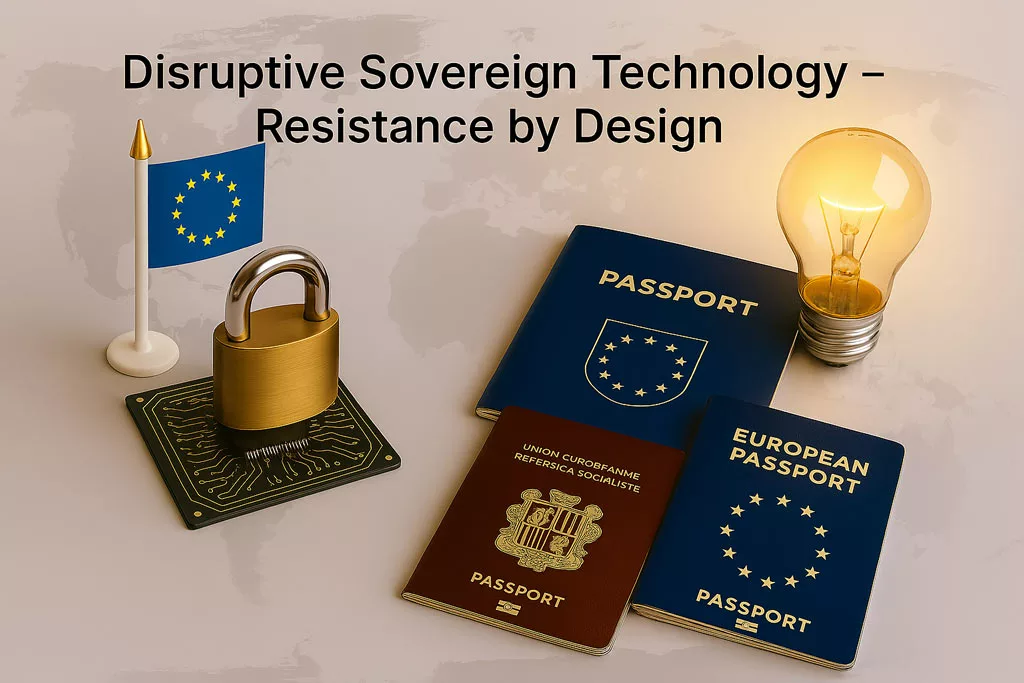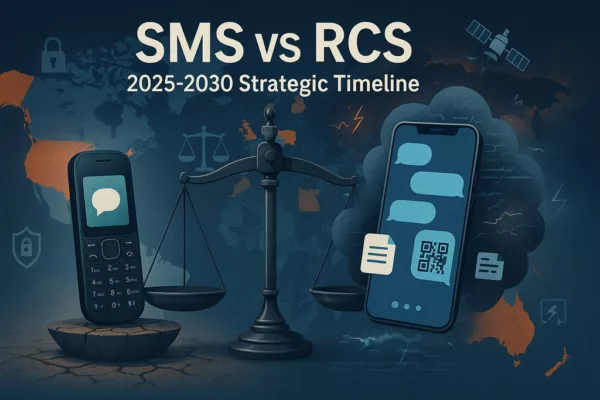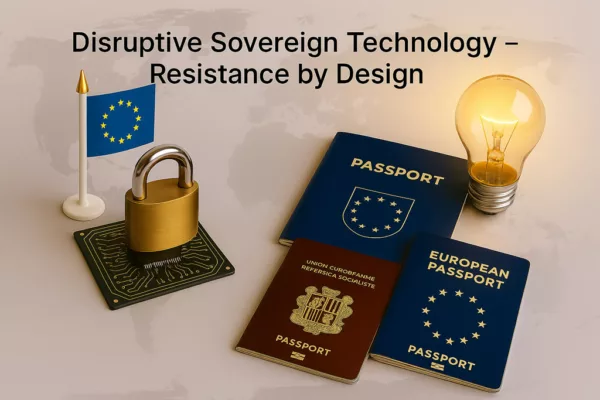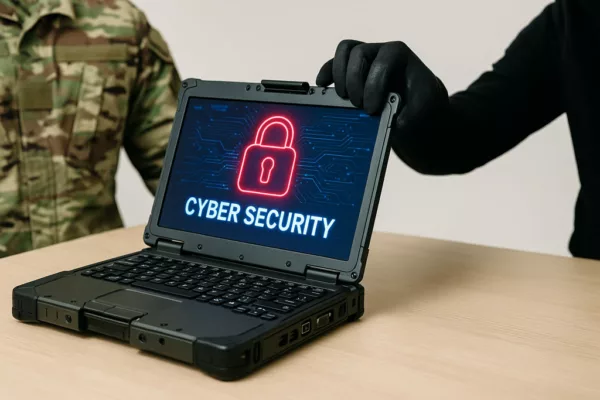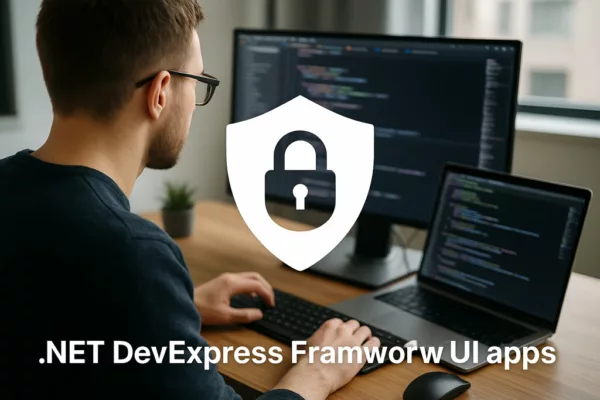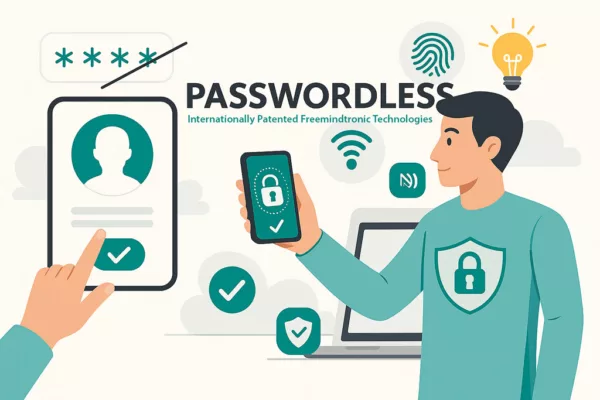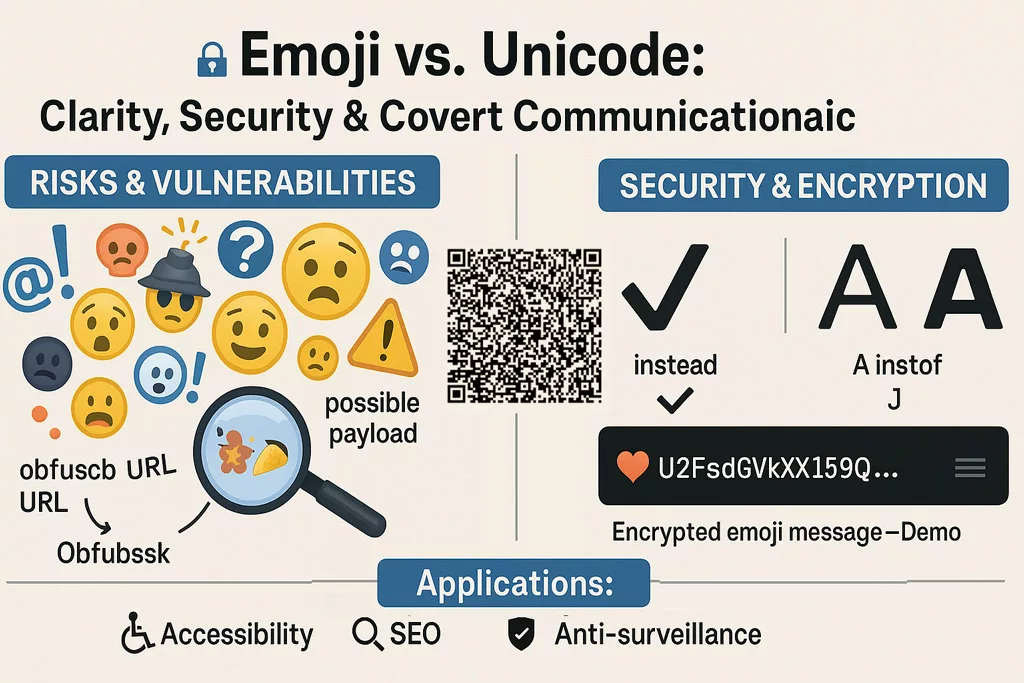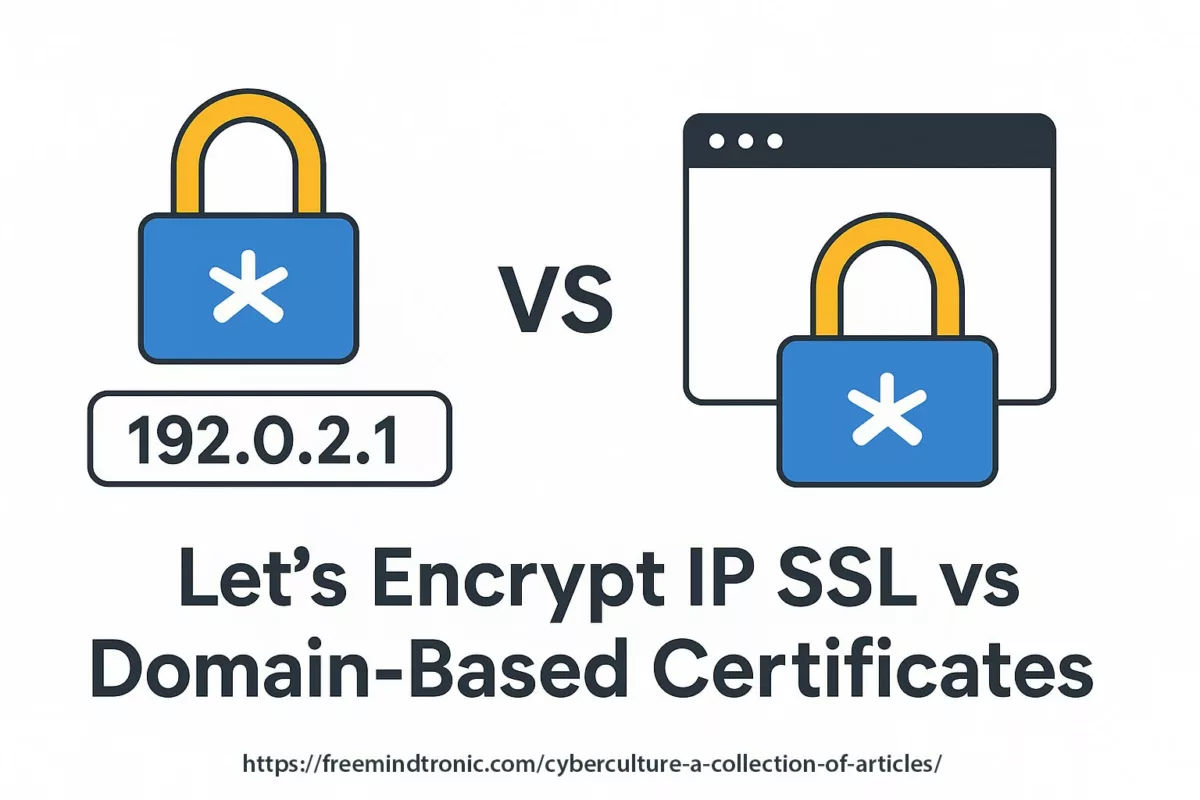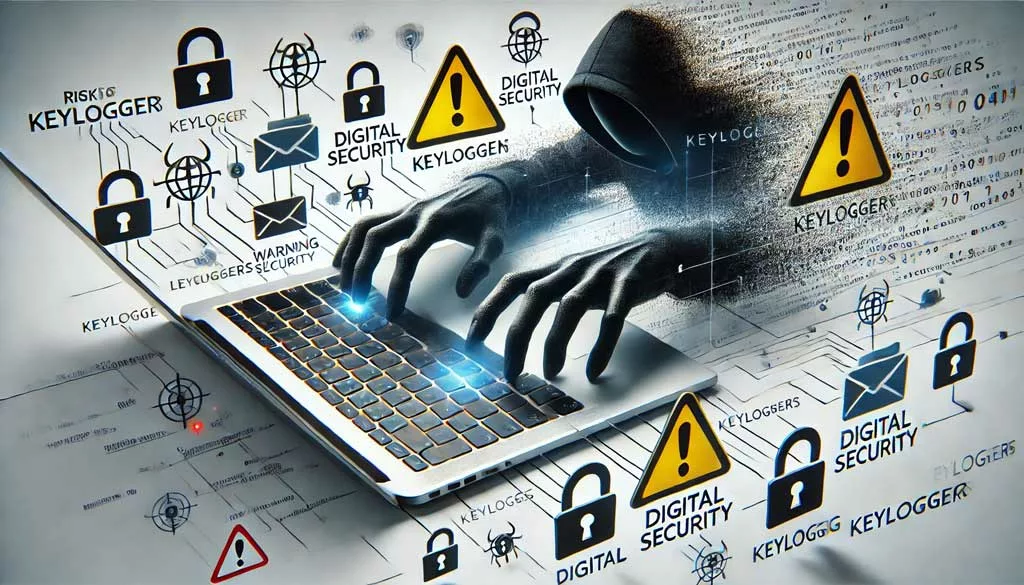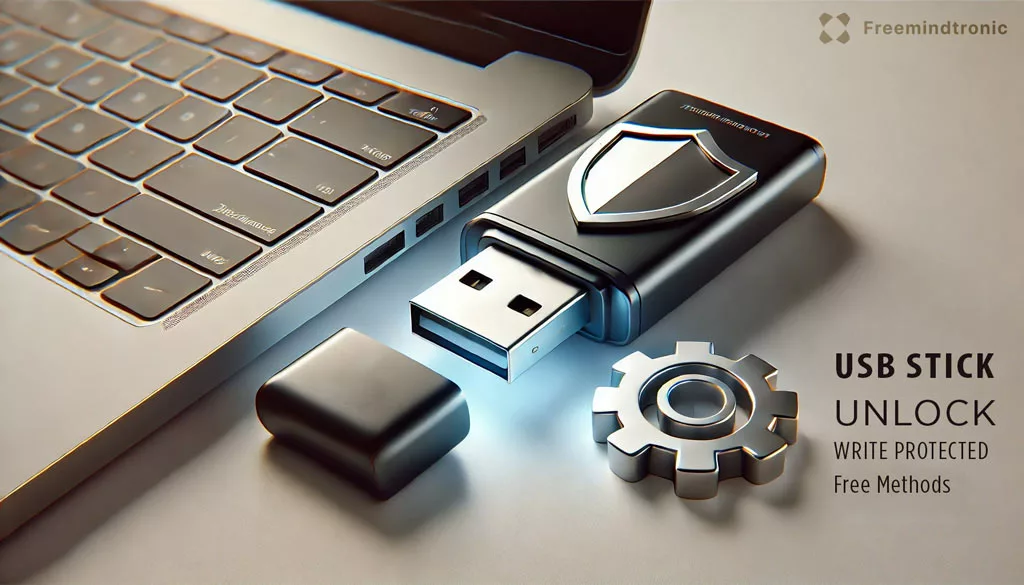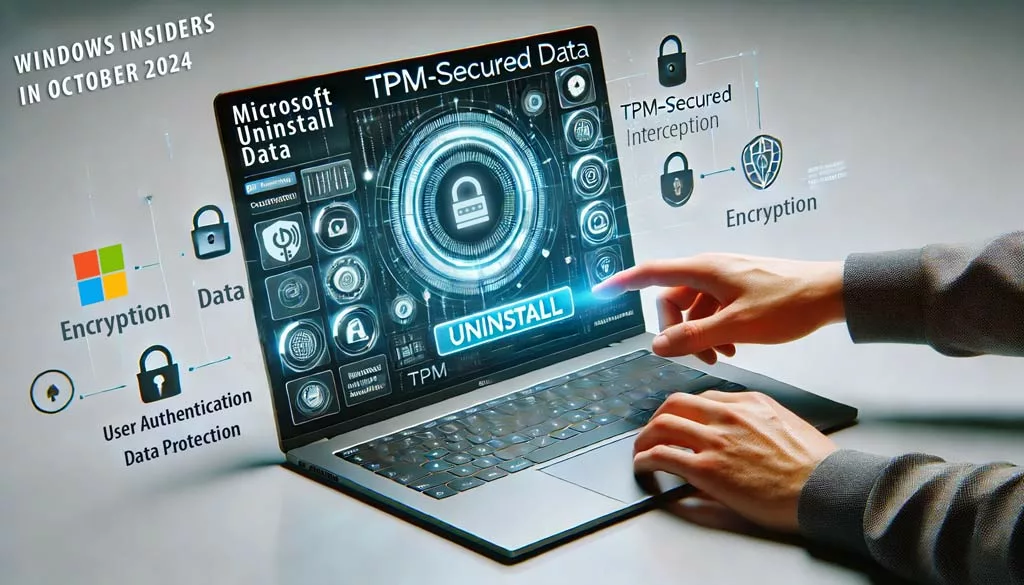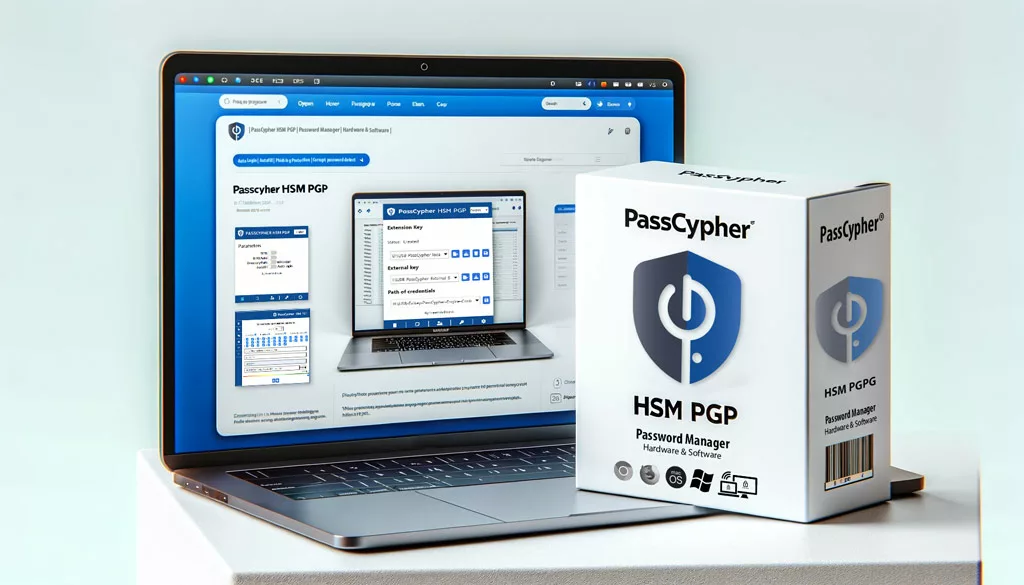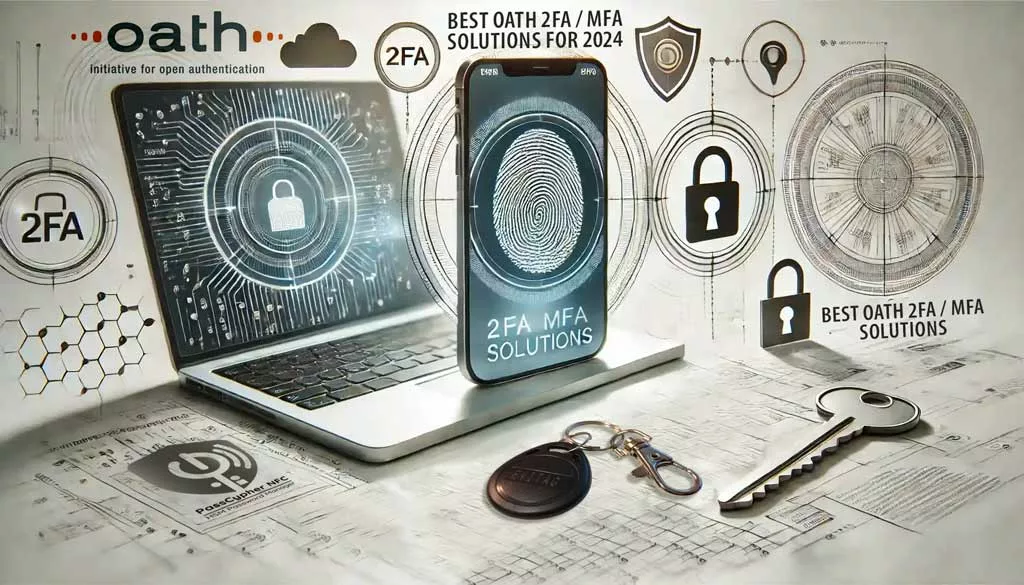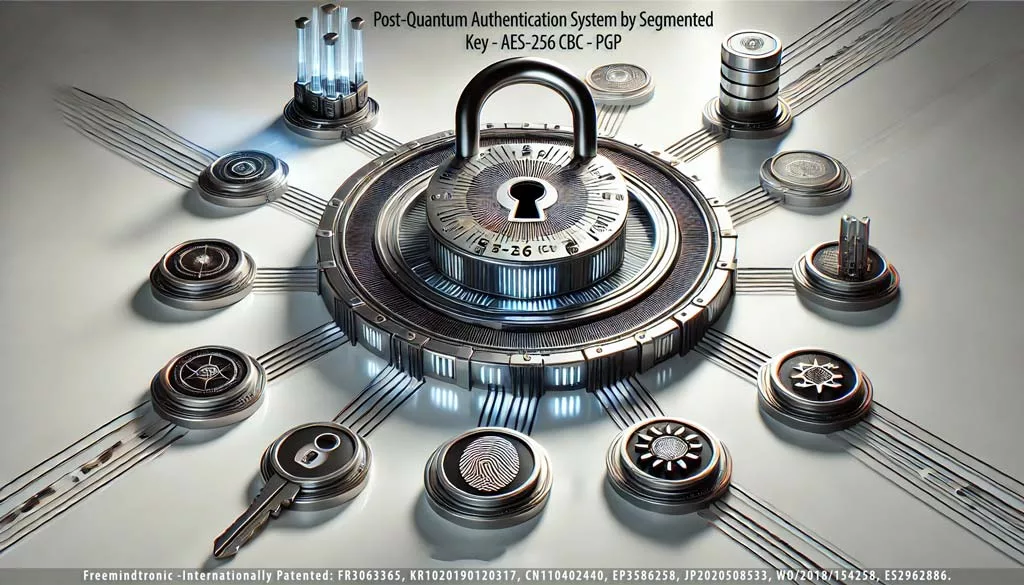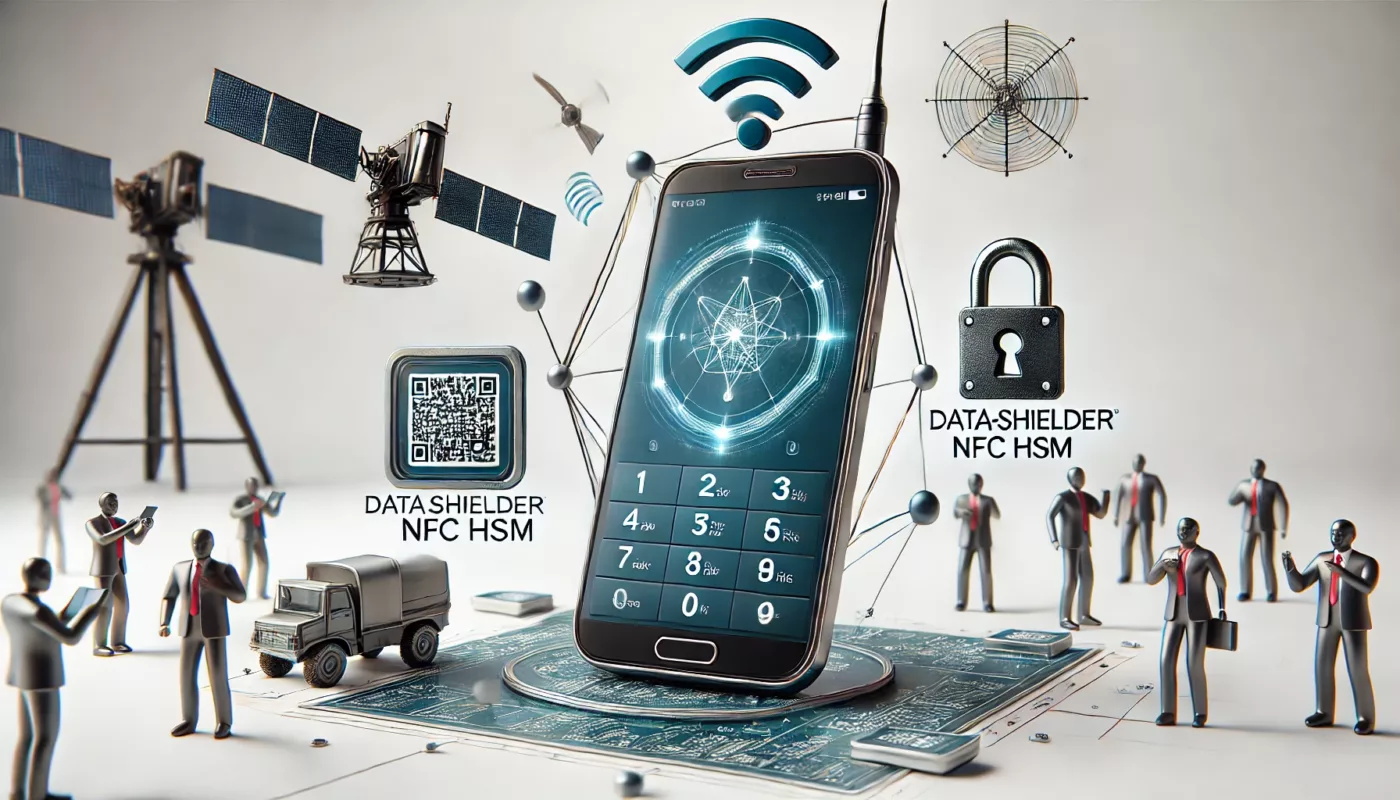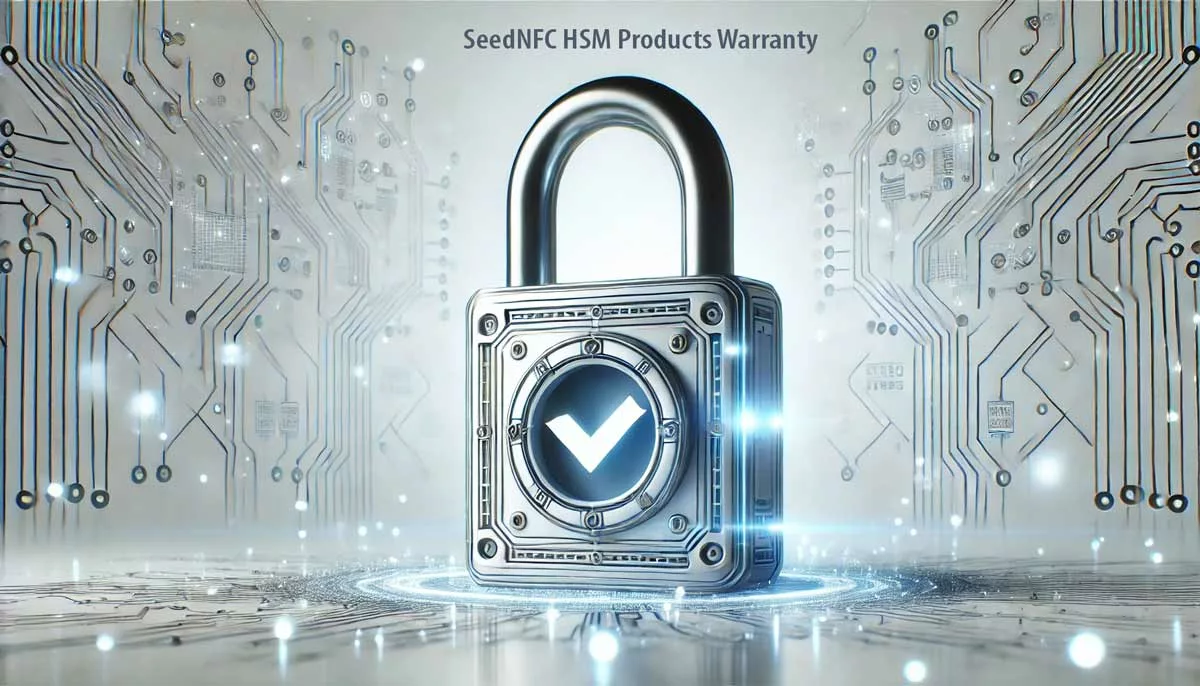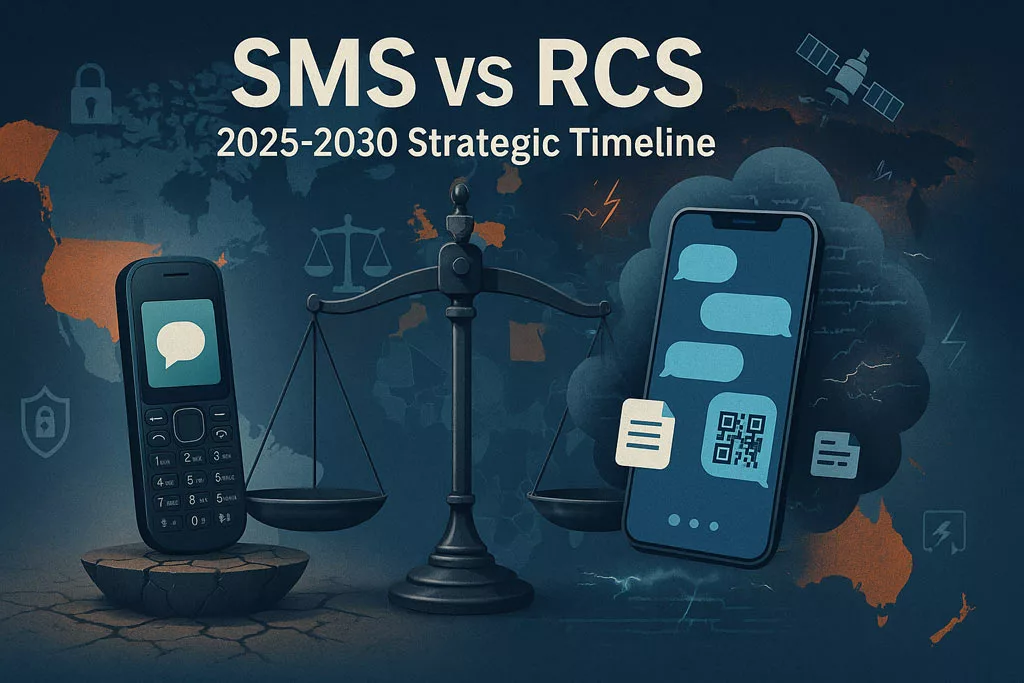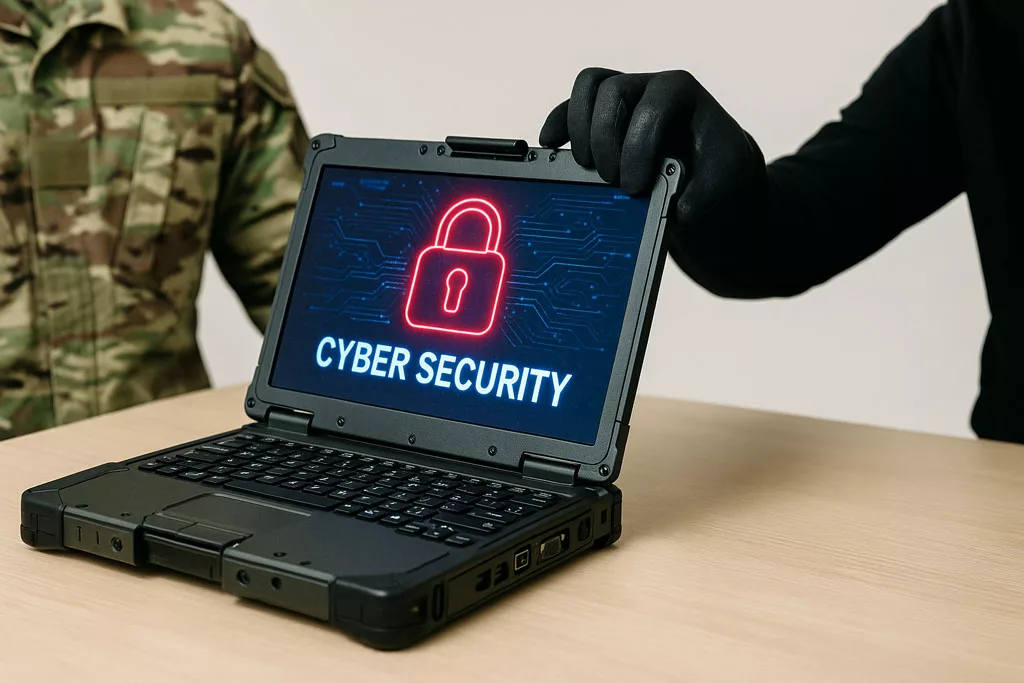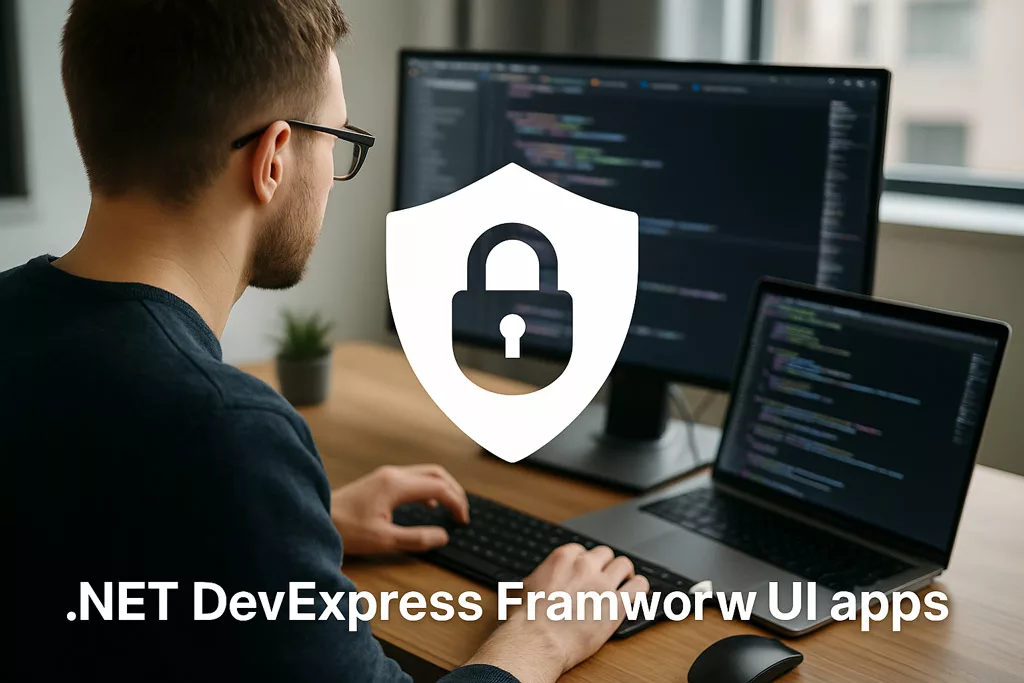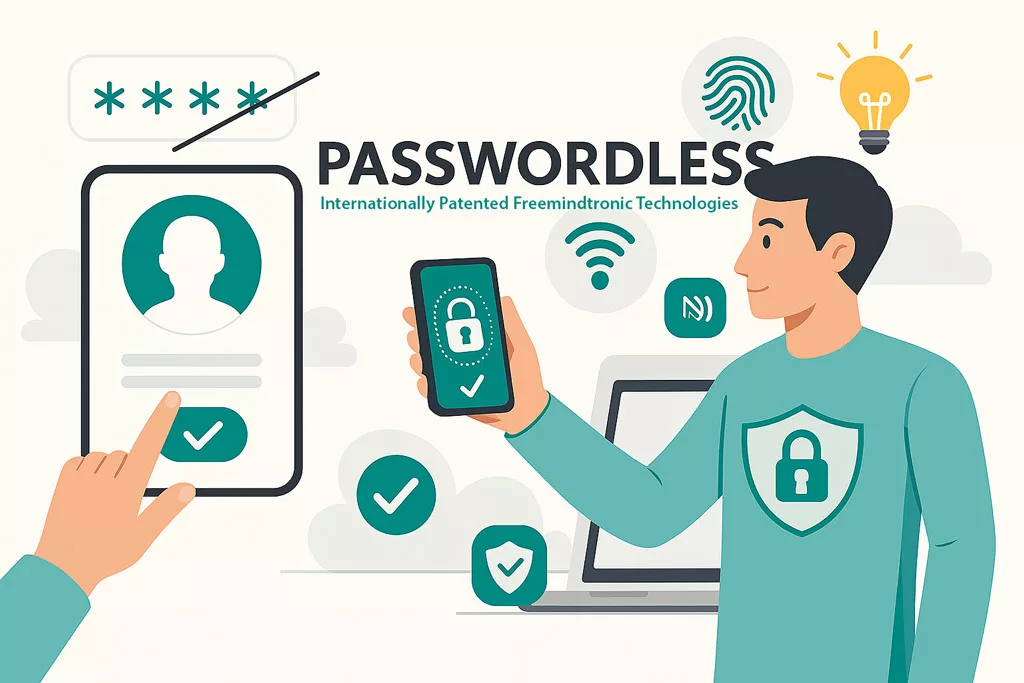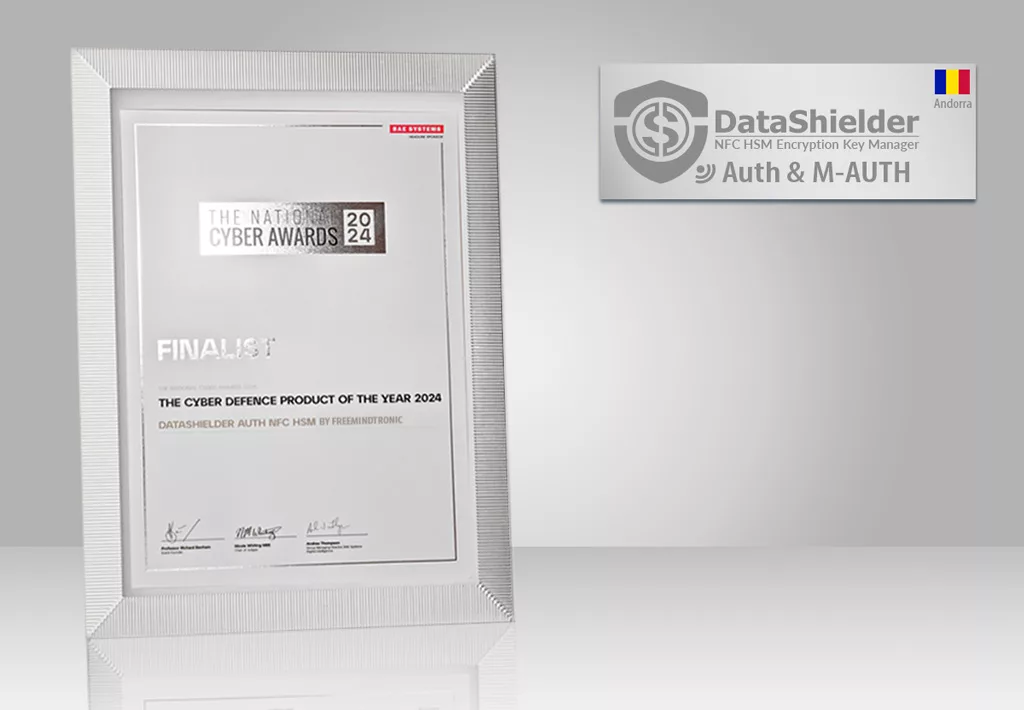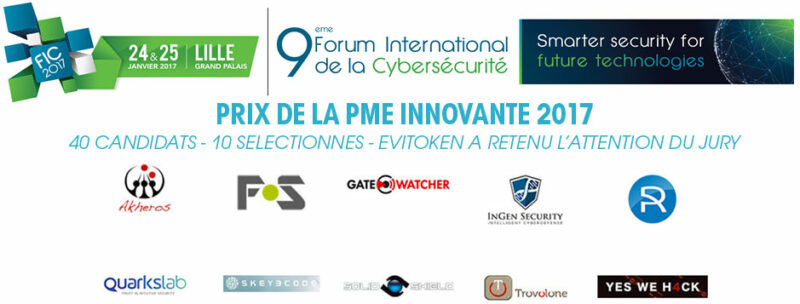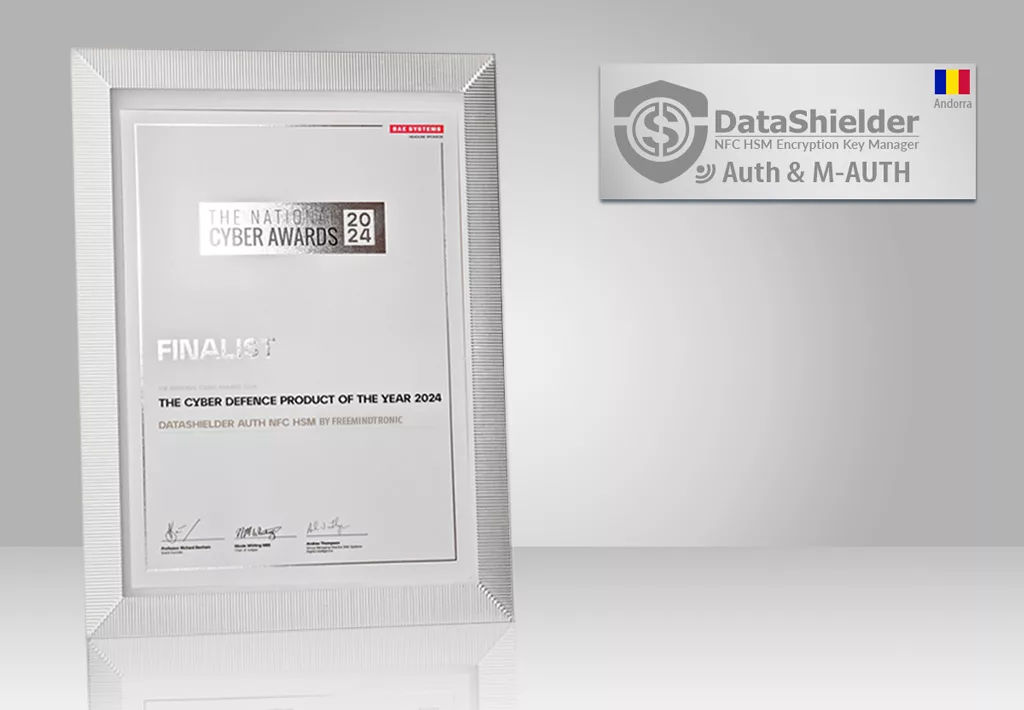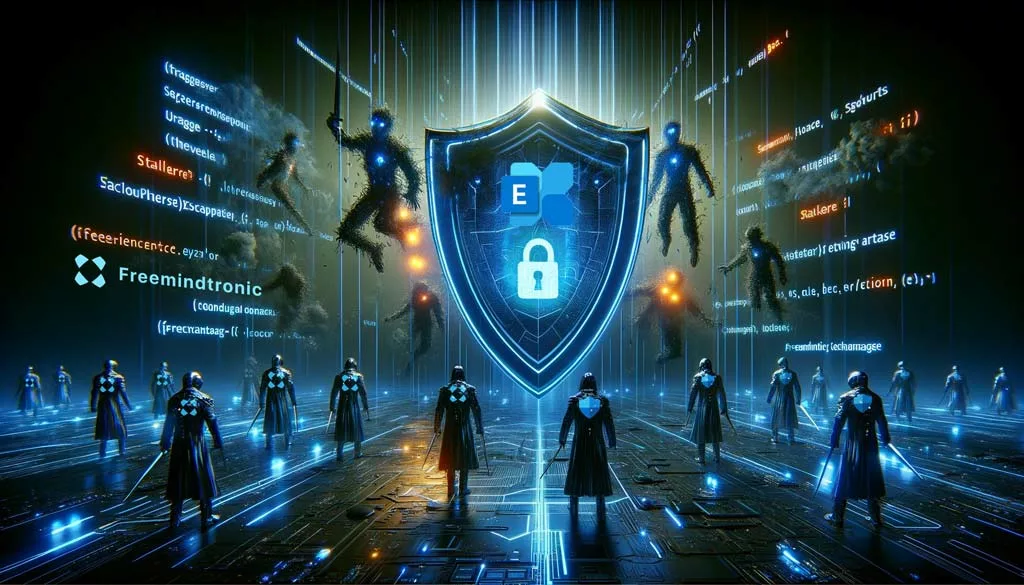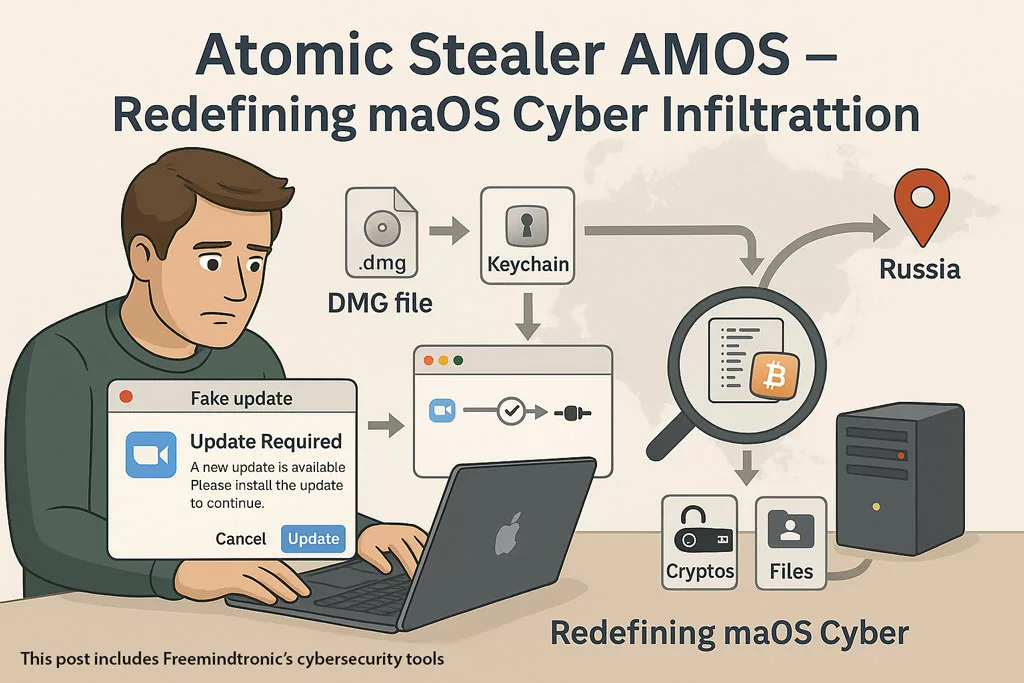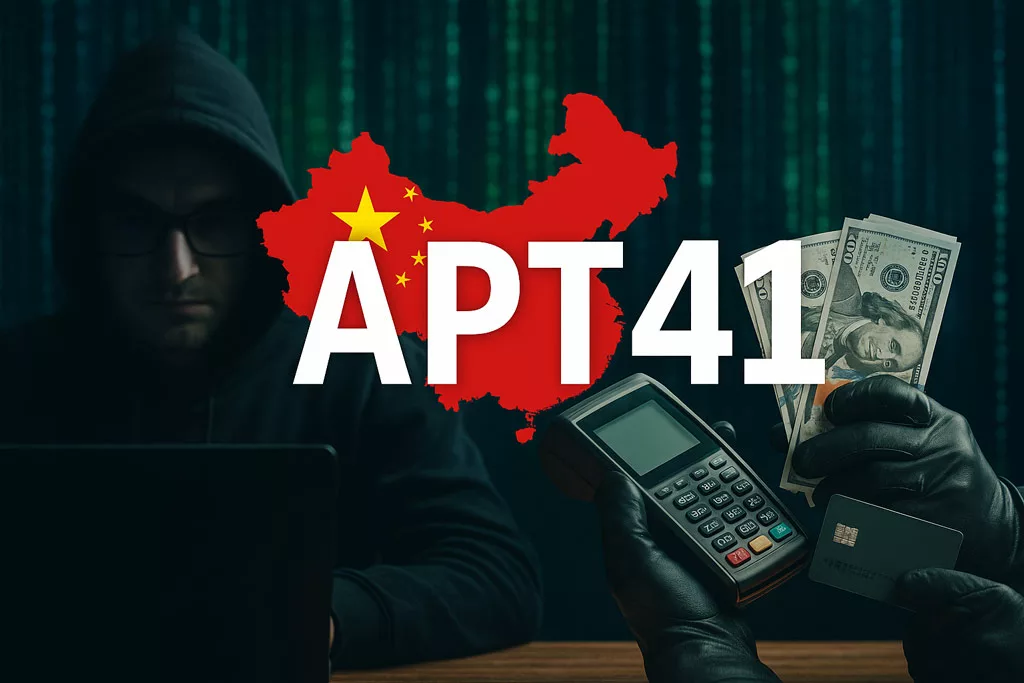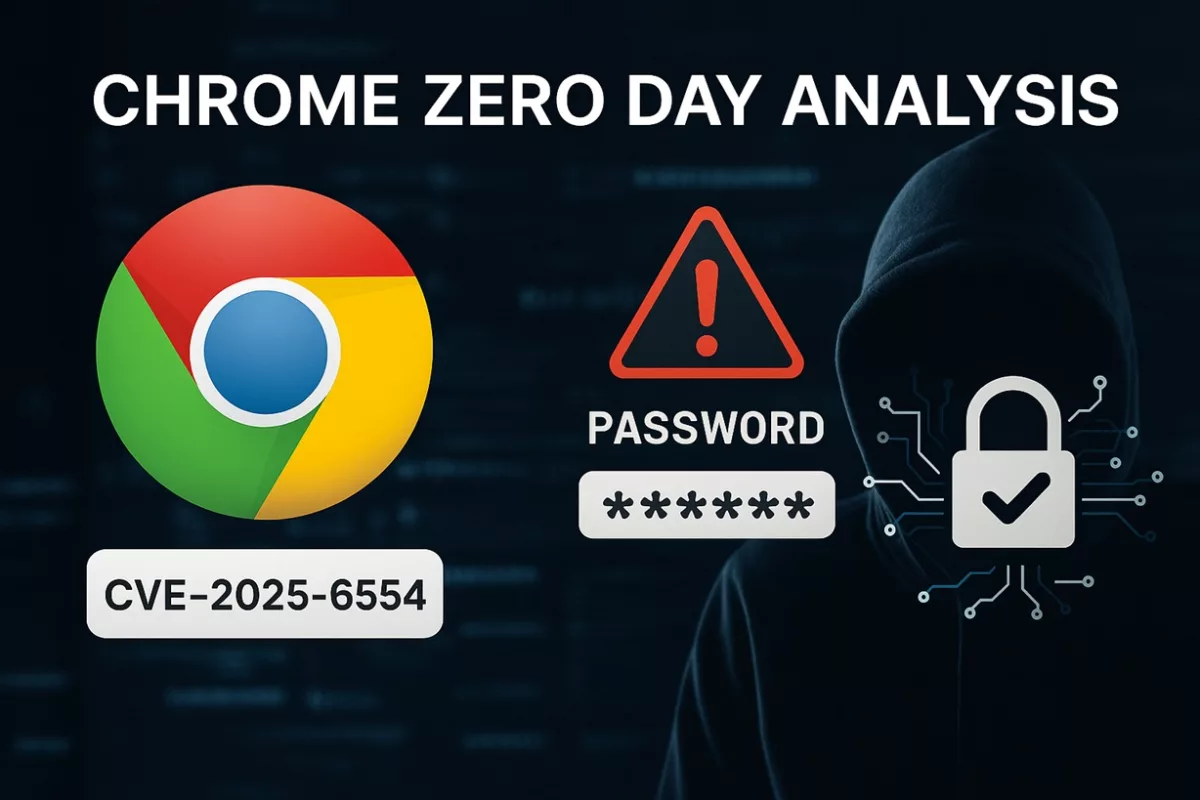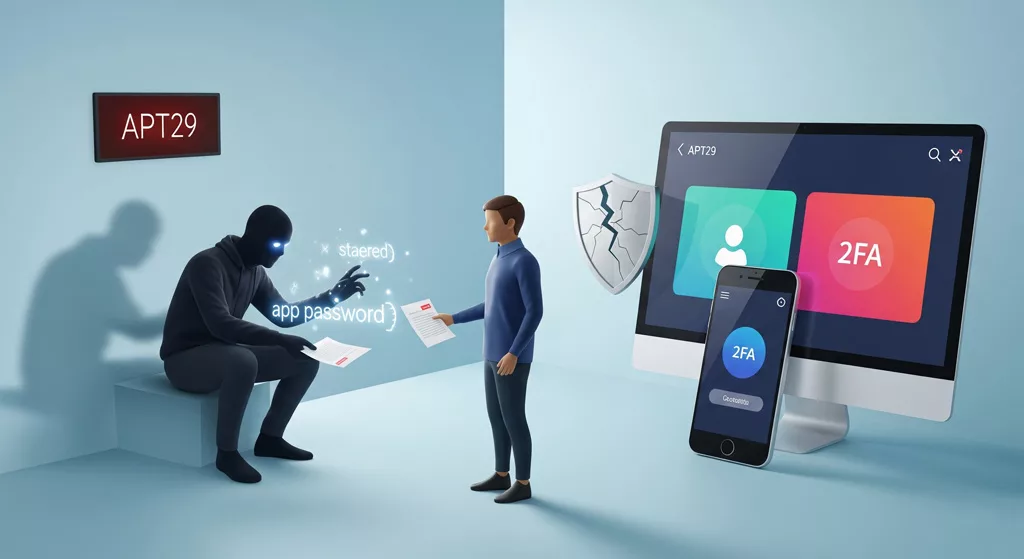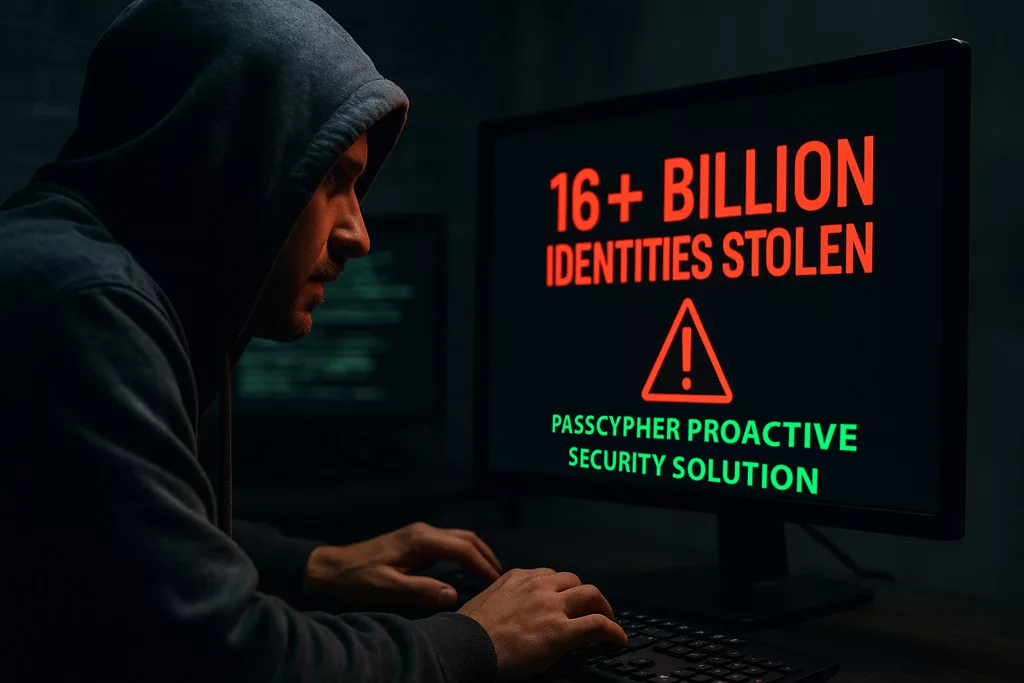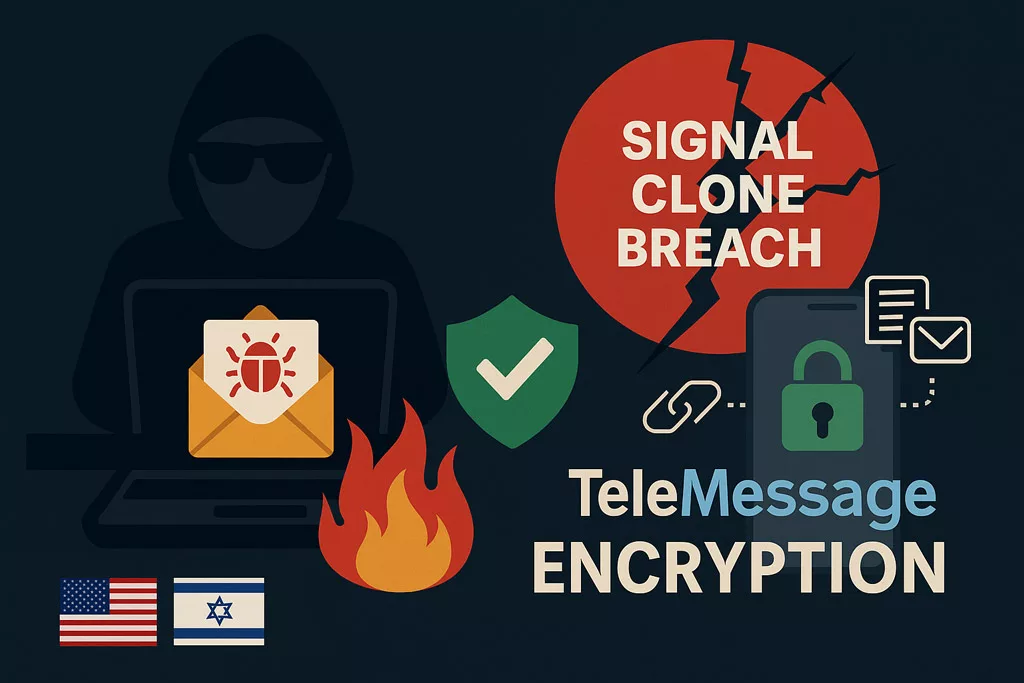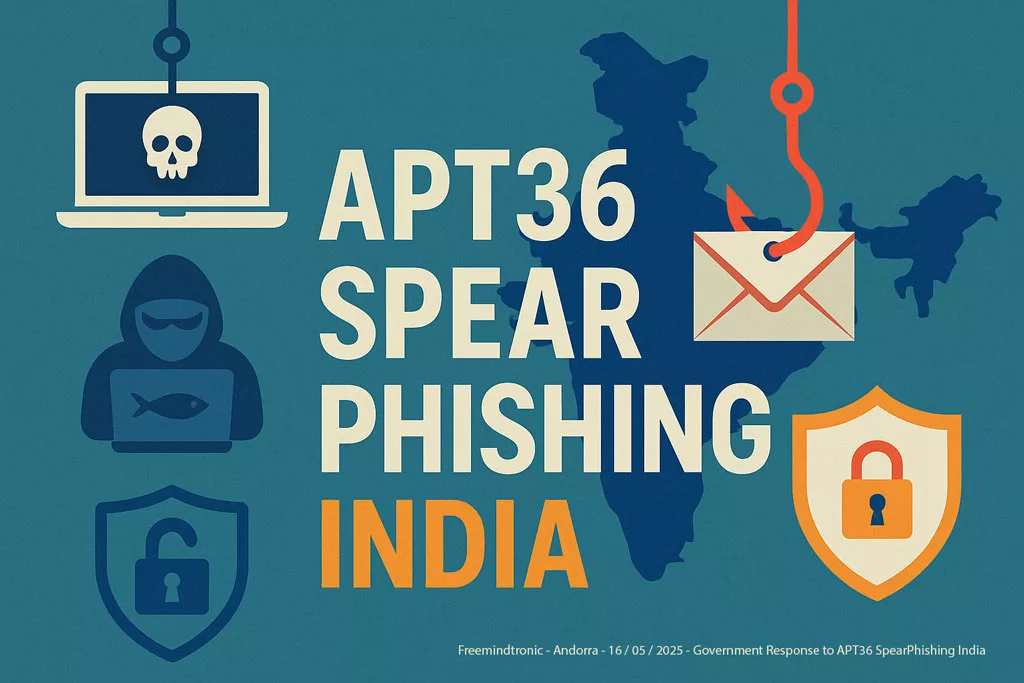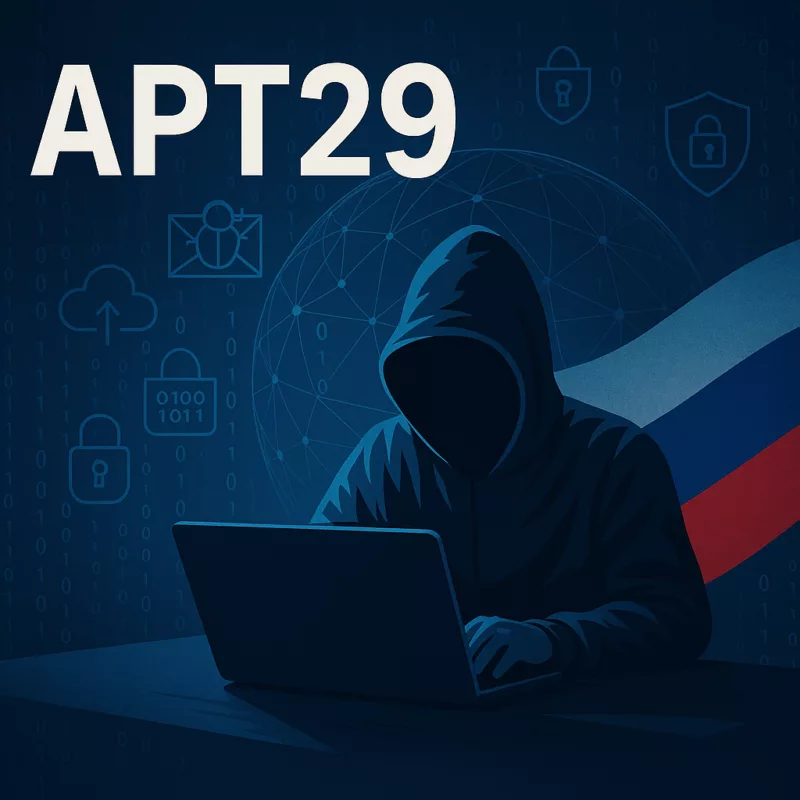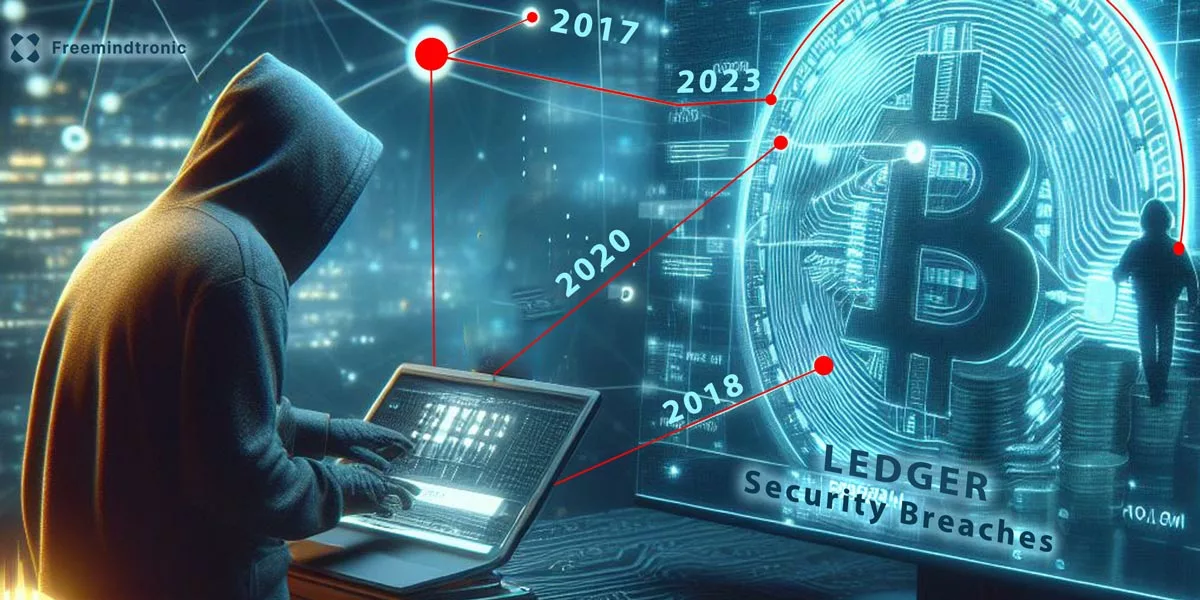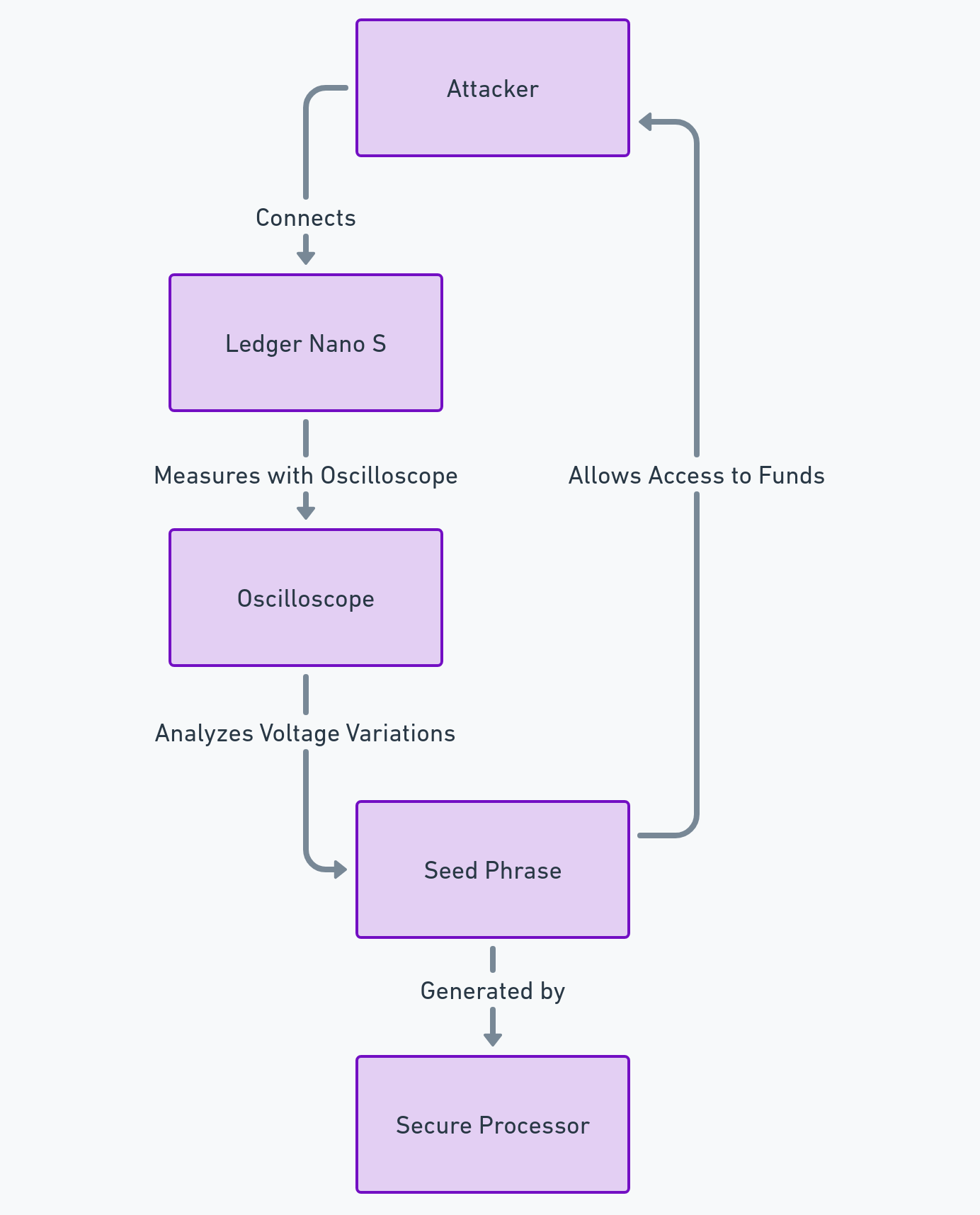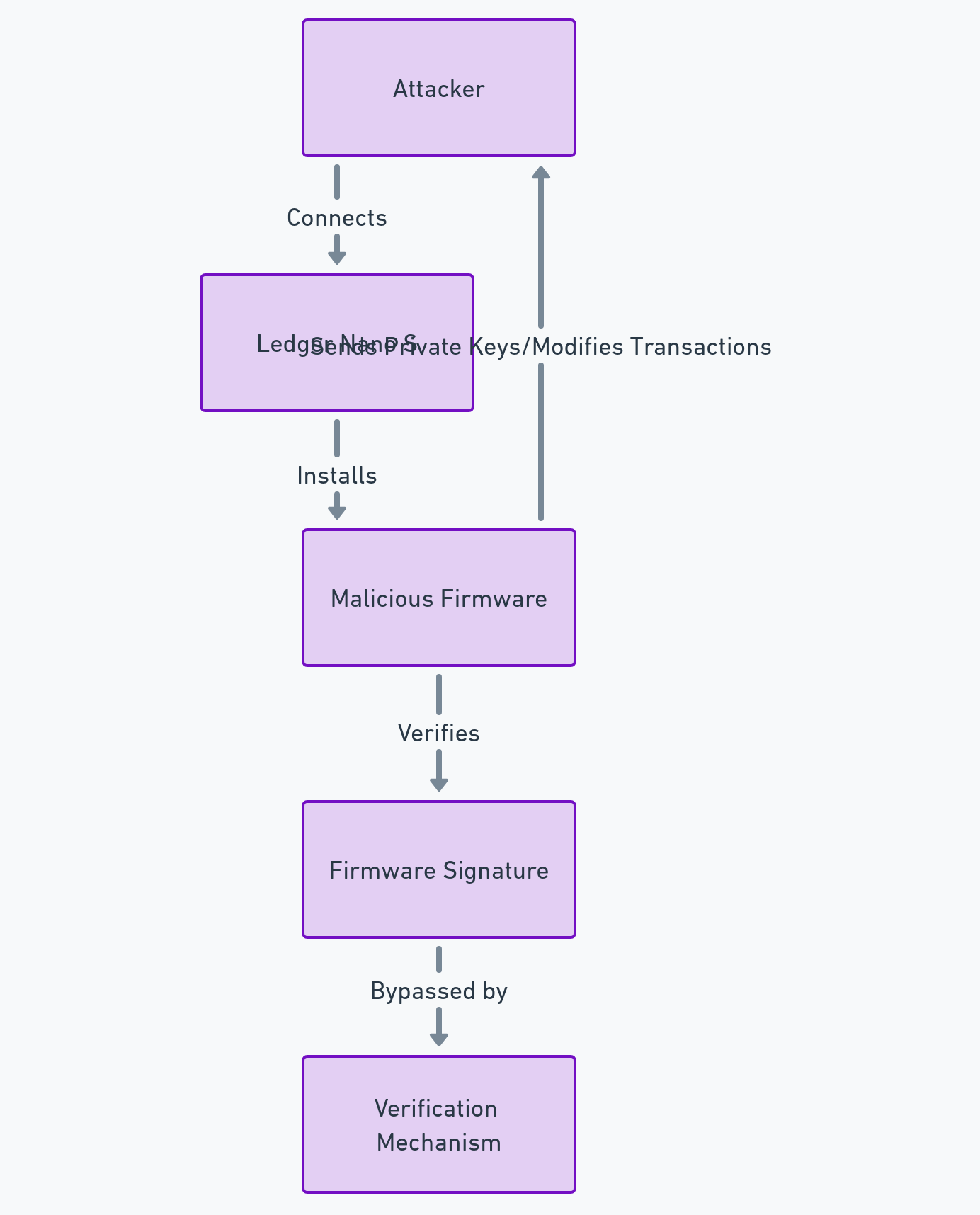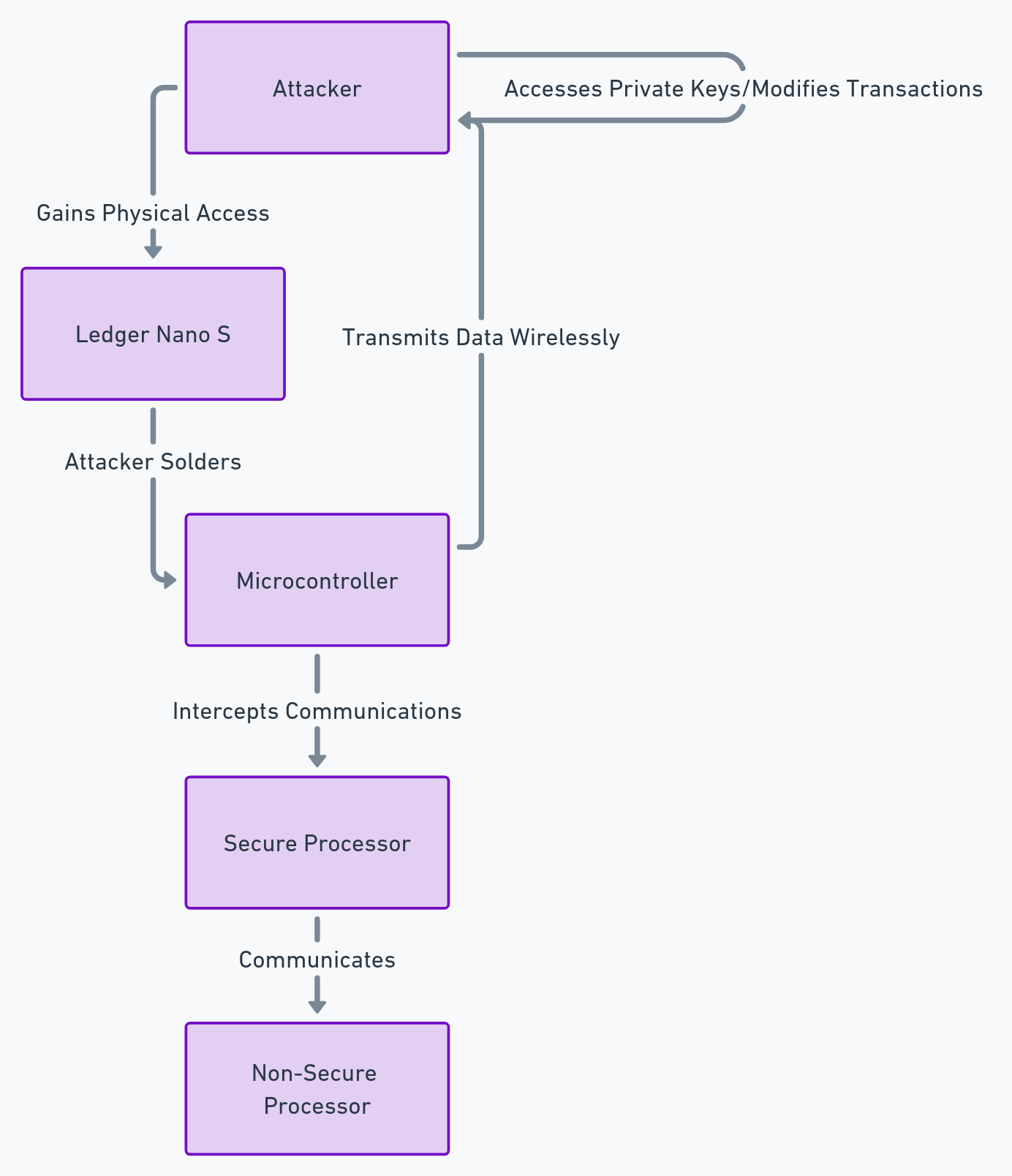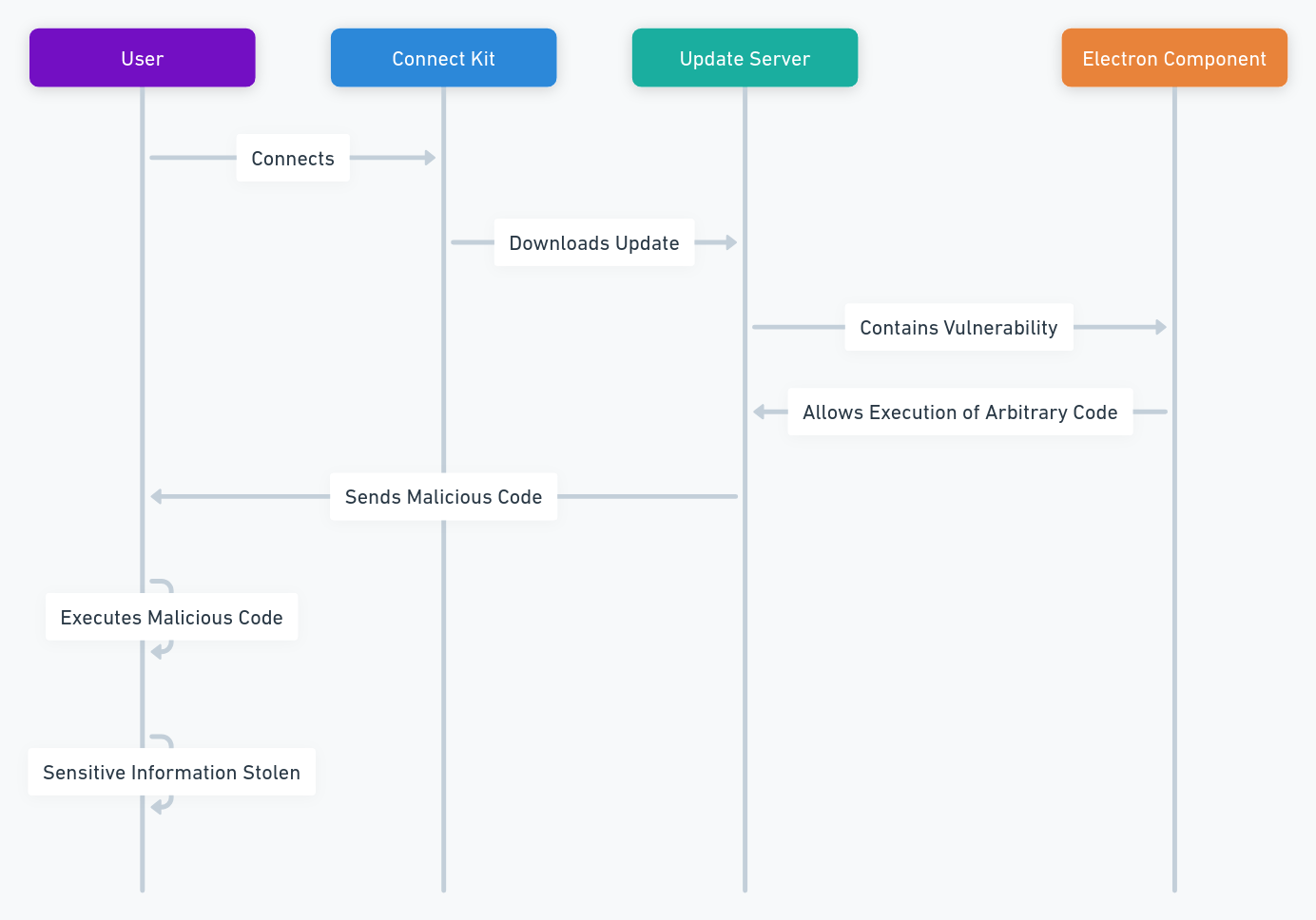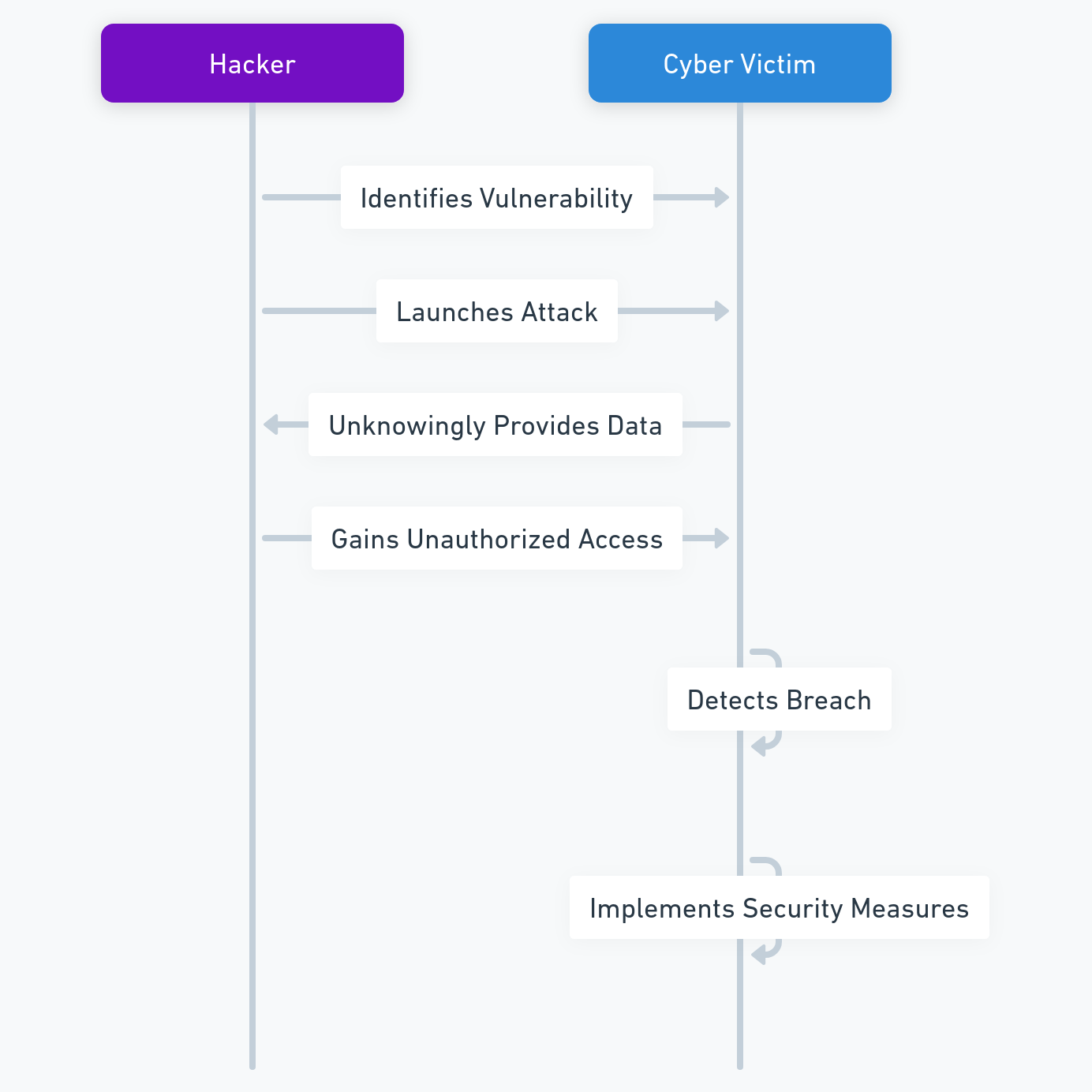Innovation of rupture is not simply a bold invention—it’s a shift in power, usage, and norms. This article explores two dominant visions of innovation, the role patents play in enabling or constraining breakthroughs, and the systemic resistance that disruptors must navigate. Using Freemindtronic’s sovereign cybersecurity technologies as a real-world case, we analyze how regulatory inertia, industrial dependencies, and biased standards affect the path to adoption. Anchored in field experience and strategic reflection, this narrative offers a vision of innovation that is resilient, disruptive, and sovereign by design.
About the author — Jacques Gascuel is the inventor and founder of Freemindtronic Andorra, where he pioneers disruptive sovereign cybersecurity technologies based on patented architectures. With a legal background and a strategic mindset, he explores how hardware-based security and normative resistance intersect in sovereign contexts. His work focuses on building autonomous systems — offline, OS-independent, and resilient by design — to address the systemic inertia in regulated environments. Through his publications, Jacques bridges field innovation, legal asymmetry, and technological sovereignty, offering a vision of cybersecurity that breaks compliance boundaries without compromising purpose.
Disruptive innovation doesn’t bloom from comfort. It emerges where certainties tremble—when new visions confront the inertia of accepted norms. In today’s strategic landscape, where sovereignty meets cybersecurity and systemic inertia blocks transformation, innovation of rupture becomes more than a buzzword. It’s a tension between evolving what exists and inventing what doesn’t. Many organizations believe innovation must adapt to existing frameworks. Others argue real progress demands defiance—crafting new usage models, new markets, and entirely new expectations. This friction fuels the deeper dilemma: should innovators conform to dominant systems or design alternatives that reshape the rules? In practice, innovation of rupture sits at this crossroads. It alters market structures, redefines user behaviors, and demands new regulatory thinking. But to disrupt effectively, it must challenge more than just technical limitations. It must shake habits, belief systems, and institutional dependencies. This article explores: While patents are commonly viewed as tools for safeguarding innovation, they rarely ensure its success. A patent may shield an idea from duplication, but it does not compel the market to embrace it. This tension is especially true for innovations of rupture, which often disrupt comfortable norms and threaten entrenched interests. Patents are legal instruments designed to grant inventors exclusive rights over their creations. They protect intellectual property, encourage investment, and often strengthen negotiation power. Yet, as powerful as patents are on paper, they do not automatically accelerate adoption. A patented disruptive technology may languish if it collides with regulatory inertia or lacks strategic alignment. 👉 According to the European Patent Office (EPO), over 50% of patents never make it to market. That figure increases when the technology challenges dominant standards or requires user behavior change. When disruption alters usage patterns or demands new norms, patents become part of a broader strategy—not a safety net. For instance, sovereign cybersecurity tools that operate without OS dependency or cloud access may bypass known frameworks entirely. In doing so, they risk clashing with legislation and standards designed around centralized control. 📌 Consider this: a patented sovereign security device offers offline encryption, no RAM exposure, and total independence. But if legal frameworks mandate auditability through centralized servers, the disruptive power becomes paradoxical—it’s secured by law yet suppressed by law. Innovation of rupture thrives only when the patent’s protection aligns with market readiness, user context, and communication strategy. Adoption requires more than exclusivity—it calls for trust, usability, and perceived legitimacy. The patent may block competitors, but only strategic narrative enables traction. As we move forward, it becomes clear that even well-protected inventions need to confront a larger force: systemic resistance driven by lobbying, standards, and industrial dependencies. Even the most visionary innovations are rarely welcomed with open arms. When a technology disrupts existing structures or threatens entrenched powers, it enters an ecosystem where resistance is embedded. Systemic forces—legislative inertia, industrial dependencies, and hidden lobbying—work collectively to defend the status quo. And this resistance doesn’t always wear a uniform. Sometimes it looks like compliance. Other times it’s masked as best practices. Standards are designed to harmonize markets, ensure safety, and guide interoperability. Yet in practice, some norms are shaped by dominant players to protect their advantage. When a disruptive technology operates outside conventional OS frameworks, centralized infrastructure, or cloud ecosystems, it may be deemed non-compliant—not because it is unsafe, but because it is independent. Strategic disobedience then becomes a necessity, not a weakness. The power of lobbying often lies in its subtlety. Through influence on advisory boards, standardization committees, or regulatory language, certain entities steer innovation in directions favorable to existing infrastructures. As reported in the OECD’s regulatory innovation framework, this type of resistance can stall sovereign solutions under the guise of safety, stability, or ecosystem integrity. Large-scale institutions—whether governmental, financial, or industrial—build upon legacy systems that are expensive to replace. Technologies that challenge those infrastructures often face delayed integration, skepticism, or exclusion. Sovereign cybersecurity tools, for instance, may offer superior decentralization, but if the ecosystem demands centralized logging or remote validation, their deployment becomes politically complex. In theory, disruptive innovation sparks transformation. In practice, it challenges conventions head-on. Freemindtronic’s sovereign cybersecurity solutions demonstrate what happens when disruption refuses to conform. Designed to operate fully offline, independent of operating systems or cloud infrastructure, these hybrid HSMs (Hardware Security Modules) embody true innovation of rupture. They don’t just secure — they redefine the terms of security itself. Freemindtronic’s DataShielder NFC HSM devices offer autonomous encryption, air-gapped by design. Credentials and cryptographic operations remain insulated from operating systems, RAM, and clipboard exposure — a direct response to threats like Atomic Stealer (AMOS), which weaponize native OS behaviors. This sovereign architecture decentralizes trust, eliminates third-party dependencies, and removes the attack surface exploited by memory-based malware. In a landscape where cybersecurity often means cloud integration and centralized monitoring, Freemindtronic’s solution is strategically disobedient. Despite its resilience and privacy-by-design principle, this type of sovereign hardware often encounters systemic resistance. Why? Because mainstream standards favor interoperability through centralized systems. Secure messaging protocols, compliance tools, and authentication flows assume OS/cloud integration. A device that deliberately avoids those channels may be seen as “non-compliant” — even when it’s demonstrably more secure. For Freemindtronic, rupture is not a side effect — it’s a strategic direction. By embedding sovereignty at the hardware level, the company redefines what cybersecurity means in hostile environments, mobility constraints, and regulatory asymmetry. Patents protect the technical methods. Field validation confirms operational effectiveness. But the real challenge lies in aligning this innovation with institutions still tethered to centralized control. Innovation of rupture offers strategic independence—but when used maliciously or without accountability, it can destabilize sovereign balance. Technologies designed for autonomy and security may become instruments of opacity, evasion, or even asymmetrical disruption. Furtive devices that bypass OS, cloud, and traceability protocols pose new ethical and political dilemmas. While sovereign tools empower users, they may also obstruct lawful oversight. This paradox reveals the fragility of digital sovereignty: the very features that protect against surveillance can be weaponized against institutions. If rupture becomes uncontrolled stealth, sovereignty turns inward—and may erode from within. State actors must balance innovation support with strategic safeguards. Furtive tech, if exploited by criminal networks or hostile entities, could bypass national defense, disrupt digital infrastructure, or undermine democratic mechanisms. The challenge is to maintain sovereignty without losing visibility. The answer is not to suppress rupture, but to govern its implications. Innovation must remain open—but the usage contexts must be anticipated, the risks modeled, and the countermeasures embedded. Otherwise, strategic disobedience may mutate into strategic evasion. In environments shaped by digital surveillance and institutional control, sovereign technologies must do more than protect — they must resist. Freemindtronic’s HSM architectures do not rely on operating systems, cloud, or centralized protocols. Their independence is not incidental — it is intentional. These devices stand as natural barriers against intrusion, espionage, and normative capture. By operating offline, memory-free, and protocol-neutral, these sovereign systems form natural countermeasures against technical espionage. At the institutional level, they resist interception, logging, and backend exploitation. At the individual level, they preserve digital autonomy, shield private credentials, and deny access vectors that compromise sovereignty. This architecture doesn’t just avoid surveillance — it actively denies the mechanisms that enable it. In doing so, it redefines the notion of defensive security: not as passive protection, but as active strategic disobedience. Sovereign HSMs like those from Freemindtronic don’t block threats — they render them inoperative. The CIA’s 2022 study on cyber deterrence recognizes that disruption of espionage pathways is more effective than traditional deterrence. Similarly, Columbia SIPA’s Cyber Disruptions Dataset catalogs how sovereign tech can neutralize even state-level surveillance strategies. Not all rupture starts by defying the frame. Sometimes, it emerges from strategic differentiation within existing norms. The Boxilumix® technology developed by Asclepios Tech exemplifies this pathway: it doesn’t reject post-harvest treatment—it reimagines it through light modulation, without chemicals. Boxilumix® respects regulatory frameworks yet achieves measurable innovation: longer shelf life, improved appearance, enhanced nutritional value. These advancements address stringent export demands and create value without entering regulatory conflict. Their approach earned high-level validation: Seal of Excellence (European Commission), Booster Agrotech (Business France), and multiple awards for sustainable food innovation. It proves that innovation of rupture can also arise from mastering differentiation, not just rebellion. Whether through institutional challenge or smart alignment, innovation succeeds when it balances context, purpose, and narrative. Asclepios Tech shows that rupture can be elegant, embodied through precision rather than force. Inventing is never enough. For innovation of rupture to matter, it must be adopted—and for adoption to happen, strategy must shape perception. Disruptive technologies don’t just fight technical inertia; they challenge political, cultural, and institutional expectations. Without a compelling narrative, even the most sovereign innovation remains marginal. Innovators often underestimate how tightly trust is bound to context. A sovereign security device may prove resilient in lab conditions, but if users, regulators, or institutions lack visibility into its methods or relevance, adoption slows. Disruption must speak the language of its environment—whether that’s national sovereignty, data protection, or resilience in critical infrastructure. A powerful narrative aligns the innovation with deeper social and institutional needs. It must translate disruption into clarity—not just for engineers, but for decision-makers, legal analysts, and end users. The message must express purpose, urgency, and credible differentiation. Long before markets shift, minds must be convinced. Creating new usage is more strategic than improving old ones. Sovereign cybersecurity tools succeed when they’re not just better, but necessary. Frictionless integration, context-aware functions, and layered utility drive usage organically. Once a tool shapes how people behave, it reshapes how industries and institutions respond. To thrive amid systemic blockers, innovators must anticipate regulatory gaps, industrial dependencies, and political asymmetries. Strategic rupture doesn’t mean isolation—it requires calibrated tension. By preparing answers to compliance queries, forging alternative trust models, and demonstrating social impact, the innovator positions disruption not as rebellion but as solution. Far from being speculative, the concept of innovation of rupture and technological sovereignty is increasingly echoed in global institutional and academic discourse. Recent studies expose how lobbying, standardization politics, and intellectual property systems can hinder strategic adoption. The need for independent frameworks, sovereign infrastructures, and regulatory agility is no longer just theoretical—it’s an emerging priority. The OECD report “Lobbying in the 21st Century” (2021) reveals how influential actors shape regulatory norms to sustain dominant business models. This aligns with our earlier analysis: disruption often faces resistance dressed as “standards.” Transparency International’s statement on OECD lobbying reforms warns of “unregulated influence ecosystems” that may suppress sovereign technologies before public adoption begins. The German institute Fraunhofer ISI defines technological sovereignty as the capacity to “make independent technological choices” in strategically sensitive domains. Their report underscores the role of rupture in escaping dependency traps — especially in digital infrastructure. Dutch research center TNO’s whitepaper details how decentralized, sovereign cybersecurity tools strengthen resilience. Offline hardware models — as exemplified by Freemindtronic — are cited as viable alternatives to cloud-based dependencies. The Stockholm School of Economics provides a detailed thesis on patent limitations: “The Impact of the Patent System on Innovation” by Julian Boulanger explains how patents fail when they lack socio-regulatory traction. Further, Télécom ParisTech’s thesis by Serge Pajak “La propriété intellectuelle et l’innovation” explores how innovation of rupture faces challenges when legal frameworks are not strategically aligned. An EU-wide study by Frontiers in Political Science “Digital Sovereignty and Strategic Autonomy” analyzes conflicts between national interest and imposed technical standards. It confirms what field innovators already know: real sovereignty often requires navigating beneath the surface of compatibility and compliance. The vision behind innovation of rupture is not isolated—it is increasingly echoed across high-level institutions, deeptech policy reports, and academic research. Sovereignty, disobedience by design, and resistance to normative capture are themes gaining traction in both state-level and multilateral contexts. Below is a curated set of official studies, whitepapers, and theses that lend credibility and depth to the disruptive sovereignty framework. The OECD’s report “Lobbying in the 21st Century” highlights how technical standards and regulatory influence are often shaped to favor incumbents. Norms may reflect ecosystem biases, not innovation potential. Transparency International further warns that unregulated influence ecosystems suppress sovereign technologies under the guise of compliance. Fraunhofer Institute’s 2021 paper frames sovereignty as the ability to make independent choices in tech-critical areas. It recognizes rupture as a mechanism to escape dependency traps and enhance strategic autonomy. The Dutch innovation hub TNO lays out clear alternatives to cloud-centric security in its 2024 whitepaper “Cybersecurity and Digital Sovereignty”. It cites air-gapped HSMs as foundational elements of resilience—a core tenet of Freemindtronic’s technology. The DGE’s Deeptech 2025 report defines innovation of rupture as a strategic lever to address industrial sovereignty, cybersecurity, and supply chain independence. It calls for regulatory flexibility and intellectual property reforms to enable adoption. In Springer’s 2024 monograph “Cyber Sovereignty”, researchers analyze how digital sovereignty is used by nations to reassert control in fragmented and unregulated technological ecosystems. It positions rupture as both political and technical strategy. Frontiers in Political Science explores the friction between pan-European norms and national digital autonomy. It validates sovereign hardware and non-cloud infrastructures as legitimate modes of technological independence. Sovereignty doesn’t exclude collaboration. As argued in Intereconomics’ article “Coopetitive Technological Sovereignty”, strategic autonomy may be best achieved by choosing productive interdependence—where innovation remains independent, but dialogue continues. Disruption without sovereignty is often short-lived. True rupture begins when innovation no longer seeks validation from the systems it challenges. As we’ve seen, patents offer protection but not traction, standards can ossify into gatekeeping tools, and market adoption demands a layered strategy. But beyond technique lies posture—a deliberate alignment between vision and action, even when action diverges from dominant models. Strategic disobedience is not recklessness—it’s methodical. It means identifying systemic bottlenecks, assessing normative traps, and crafting technologies that are contextually aware yet structurally independent. Sovereign tools do not just perform—they resist absorption. And for inventors operating at the frontier, that resistance is not a flaw but a function. Technological rupture often unsettles the familiar. It may provoke critique, trigger lobbying pushback, or be framed as “unusual.” But redefinition is born in discomfort. Freemindtronic’s example proves that by designing for autonomy and resilience, innovation can sidestep fragility and embrace sovereignty—not as a theme, but as a framework. This perspective is not closed—it’s open to interpretation, continuation, and even contradiction. Disruptive sovereignty is not a monologue. It’s a strategic invitation to reimagine innovation beyond compatibility, beyond compliance, and beyond control. It calls inventors, policymakers, and tech leaders to embody a form of creation that respects context but isn’t bound by it.Executive Summary
Strategic Reading Guide
Key Strategic Takeaways
Innovation beyond comfort zones
The Patent Paradox: Protection vs Adoption
Protection without traction
Innovation of rupture meets legal friction
Strategic alignment matters
Systemic Resistance: Lobbying, Norms and Market Inertia
Norms as strategic control mechanisms
Lobbying as invisible resistance
Legacy dependencies and institutional inertia
When norms are crafted around centralized control, true sovereignty looks disruptive. And disruption, by design, resists permission.Case Study – Freemindtronic and Sovereign HSM Disruption
Security without OS or cloud dependency
A technology that challenges normative ecosystems
Strategic positioning amid systemic resistance
Freemindtronic’s sovereign HSMs don’t just defend against threats — they reject the frameworks that enable them. That’s where rupture becomes strategy.Risks of Rupture – When Sovereign Technology Challenges Sovereignty Itself
Between emancipation and erosion
National interest and digital asymmetry
Proactive governance over sovereign tools
Without contextual safeguards, innovation of rupture risks becoming a vehicle for sovereignty denial—not reinforcement.Disruptive Counter-Espionage – Sovereignty by Design
Natural sovereignty barriers: institutional and individual
Espionage denial as strategic posture
Global recognition of disruption as countermeasure
Whether institutional or personal, sovereignty begins where espionage ends. Freemindtronic’s rupture model isn’t a shield. It’s a denial of exposure.Innovation Between Differentiation and Disruption
Conforming without compromising innovation
Recognition through integration
Strategic lesson — arbitrating innovation paths
Sometimes, the most strategic disruption is knowing how to differentiate—without leaving the frame entirely.Strategic Adoption: Making Rupture Acceptable
Context drives legitimacy
Storytelling as strategic infrastructure
Usage as a trigger of adoption
Tactical alignment with resistance
Visibility, narrative, and context make rupture acceptable—even when it remains strategically disobedient.Institutional and Academic Validation of Disruptive Sovereignty
OECD – Lobbying and normative bias
Fraunhofer ISI – Technology sovereignty as policy framework
TNO – Autonomy and digital resilience
Academic theses – Patents and resistance strategies
EU studies – Strategic autonomy and sovereignty
From OECD to Fraunhofer, EU institutions to doctoral research, the call for sovereignty in innovation is growing. Freemindtronic’s model is not fringe—it’s frontline.Strategic Validation — When Institutions and Research Confirm the Sovereign Path
OECD – Lobbying and Normative Resistance
Fraunhofer ISI – Defining Technology Sovereignty
TNO – Sovereign Cybersecurity Architectures
France – Deeptech and Sovereign Innovation Strategy
Springer – Cyber Sovereignty and Global Power Shifts
Frontiers – EU and Strategic Autonomy
Academic Theses – Patents and Resistance Mechanics
Towards Coopetitive Sovereignty
From OECD and Fraunhofer to EU bodies and French industrial strategy, your thesis is not just visionary—it’s reflected in the architecture of future innovation governance.Towards Disruptive Sovereignty – A Strategic Perspective
The role of the inventor: method over compliance
Accept discomfort, pursue redefinition
From strategic insight to collective movement
To disrupt meaningfully, innovators must stop asking for permission—and start building what permission never allowed.
Tag Archives: Freemindtronic
Unicode-Based Alternatives to Emojis for Clearer Digital Content
Emoji and character equivalence ensures universal readability, SEO optimization, and accessibility across platforms. Unicode symbols provide a structured and consistent solution for professional, legal, and technical documentation, making them an effective replacement for emojis.
✔ Discover More Digital Security Insights
▼ Explore related articles on cybersecurity threats, advanced encryption solutions, and best practices for securing sensitive data and critical systems. Gain in-depth knowledge to enhance your digital security strategy and stay ahead of evolving risks.
Quick Navigation
‣ Unicode-Based Alternatives to Emojis for Clearer Digital Content
‣ Enhance Content Accessibility and SEO
‣ Why Replace Emojis with Unicode Characters?
‣ Advantages and Disadvantages
‣ Technical Deep Dive on Unicode Encoding
‣ Industry Applications: Legal, Academic, Cybersecurity Cybersecurity Use Cases of Emoji and Character Equivalence
‣ Practical Cybersecurity Use Cases: The Value of Emoji and Character Equivalence
‣ Unicode in SIEM Alerts and Security Logs: A Critical Integration Point
‣ Enhancing Content Security with Emoji and Character Equivalence
‣ Future Trends in Unicode Standardization
‣ Practical Guide: Unicode Implementation
‣ Psychological and Linguistic Impact
‣ Advanced Emoji Exploits: Steganography, Obfuscation, Counterintelligence Dual-Uses
‣ Secure Emoji Encryption Demo – Covert Messaging with AES-256
‣ Unicode vs. Emoji in Prompt Injection Attacks on AI Systems
‣ Unicode and Internationalization for Global SEO
‣ How to Apply Emoji and Character Equivalence Today
‣ Best Unicode Equivalents for Emojis
‣ Official Sources and References
Enhance Content Accessibility and SEO: The Complete Guide to Unicode Alternatives for Emojis
Emojis have become ubiquitous in our digital communication, adding a layer of emotion and personality to our texts. However, their inconsistent display across platforms and the challenges they pose in terms of accessibility and search engine optimization (SEO) underscore the necessity of exploring more reliable alternatives. This guide delves deeply into how Unicode characters offer a structured and universal solution for digital content that is clear, accessible, and optimized for SEO, including considerations for cybersecurity communication.
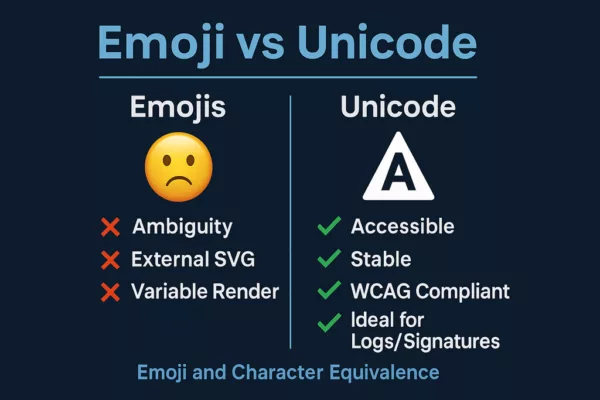
Infographic showing Emoji and Character Equivalence with a visual comparison of the limitations of emojis versus the cybersecurity benefits of Unicode characters. Visual breakdown of Emoji and Character Equivalence: Unicode is more secure, accessible, and reliable than emojis for cybersecurity contexts.
Why Opt for Unicode Characters Over Emojis?
The concept of emoji and character equivalence is essential for ensuring content consistency, optimizing SEO, and improving accessibility, as well as maintaining clarity in fields like cybersecurity. While emojis enhance engagement, their display varies depending on platforms, devices, and browsers, making Unicode characters a reliable and universal alternative for accessible content, better search ranking, and precise cybersecurity communication.
✔ Advantages
- Universal Compatibility – Unicode characters are recognized across all systems and browsers, ensuring consistent display, crucial for reliable cybersecurity information.
- Enhanced Accessibility – Assistive technologies interpret Unicode characters more efficiently than emojis, contributing to better compliance with web accessibility guidelines (WCAG), vital for inclusive cybersecurity resources.
- SEO Optimization – Special characters are indexed correctly by search engines, ensuring better visibility in search results, including searches related to cybersecurity symbols. Strategic use in titles and descriptions can also attract attention for improved SEO in the cybersecurity domain.
- Professional Consistency – Utilizing Unicode formatting is more suited to legal, academic, and business communications, including cybersecurity reports and documentation, where clarity and precision are paramount. The ambiguous nature of emojis can lead to misunderstandings, especially in sensitive fields like cybersecurity.
- Performance Considerations – Emojis can sometimes be rendered as images, especially on older systems, potentially increasing page load times compared to lightweight Unicode text characters, thus impacting site performance and potentially SEO, including for websites providing cybersecurity information.
✘ Disadvantages
- Reduced Visual Appeal – While emojis capture attention with their colorful graphic nature (for example, a simple 😊, their Unicode equivalent (U+263A, ☺) is a textual character. While the latter ensures compatibility, it can have a less immediate visual impact on user engagement, potentially affecting the perceived urgency of cybersecurity alerts.
- Limited Expressiveness – Unicode characters lack the emotional depth and visual cues of emojis, which might be relevant in less formal cybersecurity community discussions.
- Formatting Challenges – Inserting certain Unicode symbols, such as complex directional arrows (e.g., U+2913, ⤓) or specific mathematical symbols (e.g., U+222B, ∫), may require memorizing precise Unicode codes or using character maps, which can be less intuitive than selecting an emoji from a dedicated keyboard, potentially slowing down the creation of cybersecurity content.
Enhancing Content Security with Emoji and Character Equivalence
Recent research highlights critical cybersecurity risks associated with emoji usage. While emojis improve engagement, their hidden vulnerabilities can pose security threats. Understanding Emoji and Character Equivalence helps mitigate these risks while ensuring accessibility and SEO optimization.
✔ Emojis as Hidden Payloads Cybercriminals embed tracking codes or malware within emojis, particularly when encoded as SVG assets or combined with Zero Width Joiner (ZWJ) characters. This technique allows threat actors to deliver hidden payloads undetected, making Unicode characters a safer alternative.
✔ Misinterpretation Across Cultures and Legal Implications The visual representation of emojis varies by region, often leading to miscommunication or legal disputes. Unicode characters provide a standardized approach, avoiding ambiguity in contracts, digital agreements, and cross-cultural messaging.
✔ Accessibility Challenges for Screen Readers Screen readers may translate emojis inaccurately, generating verbose or misleading descriptions for visually impaired users. Relying on Unicode characters enhances clarity, ensuring consistent accessibility across assistive technologies.
✔ SEO Performance and Metadata Impact Emojis in SEO metadata may increase click-through rates, but their inconsistent rendering across platforms limits indexation reliability. Implementing Unicode characters ensures better search engine readability, reinforcing structured content strategies.
Official Sources on Emoji Vulnerabilities
- Smuggling Data Through Emojis – Paul Butler’s Research
- Cultural Misinterpretations of Emojis – Emoji Code Analysis
- Screen Reader Accessibility Issues – Scope Business
- SEO Risks of Emoji Use – ContentPowered SEO Report
By embracing Emoji and Character Equivalence, digital creators strengthen security, accessibility, and search visibility. Unicode characters offer a stable and universally recognized alternative, ensuring that content remains optimized and protected across platforms.
Technical Deep Dive on Unicode Encoding for Emojis and Symbols in Cybersecurity Contexts
✔ Understanding How Unicode Encodes Emojis and Special Characters for Cybersecurity Unicode assigns a unique code point to each emoji, enabling its display across various operating systems. However, rendering depends on the platform, leading to variations in appearance. For example, the red heart emoji (❤️) has the Unicode code U+2764 followed by the emoji presentation sequence U+FE0F. When used in text mode (without U+FE0F), it may appear as a simple black heart (♥, U+2665) depending on the font and system. Special characters like the checkmark (✔) have a unique code (U+2714) and are rendered consistently as text, aiding in content accessibility for cybersecurity professionals
✔ Emoji Presentation Sequences vs. Text Presentation Sequences in Unicode for Cybersecurity Communication Some Unicode characters exist both as text and emoji versions. Presentation sequences determine whether a character displays as a graphic emoji or as standard text. For example, the Unicode character for a square (□, U+25A1) can be displayed as a simple text square. By adding the emoji presentation sequence (U+FE0F), it may be rendered as a colored square on some platforms if an emoji style for that character exists. This distinction is crucial for both visual presentation and SEO considerations, especially for cybersecurity platforms.
It’s also important to note that some Unicode symbols are “combining characters.” These are designed to be overlaid onto other characters to create new glyphs. For instance, adding an accent to a letter involves using a combining accent character after the base letter, which might have niche applications in specific cybersecurity notations.
Industry-Specific Applications of Unicode Characters for Professional Content, Including Cybersecurity
✔ Using Unicode in Legal and Academic Documents Unicode characters are preferred over emojis in contracts, academic papers, and official reports, where consistency and professionalism are essential for clear communication. The ambiguous nature of emojis can lead to misinterpretations in legally binding documents, making standardized characters a safer choice, which also applies to the formal documentation within the cybersecurity industry.
✔ Leveraging Unicode in Cybersecurity and Technical Documentation Security experts and programmers use Unicode symbols in programming languages, encryption protocols, and cybersecurity reports for precision and clarity in technical content. For example, in code, Unicode symbols like logical operators (e.g., ∀ for “for all,” ∃ for “there exists”) or arrows (→, ←) are used for precise notation. In cybersecurity reports, specific alert symbols (⚠, ☢, ☣) can be used in a standardized way to convey specific threat levels or types, enhancing information accessibility for cybersecurity professionals..
✔ Corporate Branding with Unicode for Consistent Visual Identity, Including Cybersecurity Firms Many companies integrate Unicode characters into branding materials to ensure consistent representation across marketing assets. Some companies subtly incorporate Unicode characters into their text-based logos or communication to create a unique and consistent visual identity across platforms where typography is limited, contributing to brand recognition in search results, including for cybersecurity companies. For example, a tech brand might use a stylized arrow character or a mathematical symbol to evoke innovation and security.
Practical Cybersecurity Use Cases: The Value of Emoji and Character Equivalence
For cybersecurity professionals, adopting Emoji and Character Equivalence goes far beyond visual consistency — it strengthens secure communication, ensures compatibility across platforms, and reduces attack surfaces. Below are key scenarios where this principle makes a strategic difference.
✔ Use Case 1: Security Alert Bulletins
A CISO distributes a critical vulnerability bulletin using the emoji ⚠️. On some outdated terminals or filtered environments, the emoji fails to render or displays incorrectly.
✅ Unicode Advantage: Using U+26A0 (⚠) ensures universal readability, including by screen readers and legacy systems, supporting clear and actionable cybersecurity communication.
✔ Use Case 2: Secure Internal Messaging
In secure mail systems, emojis may be blocked or replaced to prevent the loading of external SVG assets, which can introduce vulnerabilities.
✅ Unicode Advantage: With Emoji and Character Equivalence, using Unicode characters instead of emojis eliminates these external dependencies while preserving the intended meaning and visual cue.
✔ Use Case 3: Signed System Logs and Forensics
Emojis rendered as images or platform-dependent glyphs can cause inconsistencies in cryptographic hash comparisons during log audits or forensic analysis.
✅ Unicode Advantage: Unicode characters have a stable code point (e.g., U+2714 for ✔), ensuring that logs remain verifiable across environments, crucial for integrity and non-repudiation in cybersecurity workflows.
These examples demonstrate how implementing Emoji and Character Equivalence is not only a matter of formatting — it’s a tactical choice to improve clarity, compliance, and reliability in cybersecurity communication.
Unicode in SIEM Alerts and Security Logs: A Critical Integration Point
Security Information and Event Management (SIEM) systems rely on structured, machine-readable alerts. Emojis—often rendered as platform-dependent graphics or multibyte sequences—can disrupt formatting, corrupt parsing logic, and complicate forensic investigations.
✅ Unicode characters such as U+26A0 (Warning: ⚠), U+2714 (Check mark: ✔), and U+2717 (Cross mark: ✗) provide:
- Stable rendering across terminals, dashboards, and log collectors.
- Consistent cryptographic hashing in signed event logs.
- Reliable pattern matching in SIEM rules and regular expressions.
- Screen reader compatibility for accessible security dashboards.
Example:
Instead of inserting a graphical emoji into a high-severity alert, use U+2717 (✗) for guaranteed interpretability across systems and tools.
This Unicode-based strategy ensures compatibility with:
- Automated threat detection pipelines
- Regulatory compliance tools
- SIEM log normalization engines
- Long-term forensic retention archives
Unicode brings predictability, clarity, and durability to cybersecurity event management—core to any zero-trust and audit-ready architecture.
Case Study: Emoji-Based Vulnerabilities and Cybersecurity Incidents
While emojis may appear innocuous, documented cyberattacks have demonstrated that they can be exploited due to their complex rendering behavior, reliance on external assets (like SVG), and ambiguous encoding. These cases reinforce the importance of adopting Emoji and Character Equivalence practices, especially in cybersecurity contexts where clarity, stability, and accessibility are critical.
⚠ Unicode Rendering Crash (Unicode “Bombs”)
➔ In 2018, a sequence of Unicode characters — including a Telugu glyph and modifiers — caused iPhones to crash and apps like iMessage to freeze. This vulnerability stemmed from how Apple’s rendering engine mishandled complex Unicode sequences.
✔ Sources officielles :
• MacRumors – iOS Unicode Crash Bug: https://www.macrumors.com/2018/02/15/ios-11-unicode-crash-bug-indian-character/
• BBC News – iPhone crash bug caused by Indian character: https://www.bbc.com/news/technology-43070755
⚠ Malicious SVG Rendering in Messaging Platforms
➔ Some messaging platforms like Discord rendered emojis through external SVG files, introducing a surface for remote code injection or tracking. Attackers exploited this to embed malicious content through emoji payloads.
✔ Source officielle :
• Dark Reading – Emojis Control Malware in Discord Spy Campaign: https://www.darkreading.com/remote-workforce/emojis-control-malware-discord-spy-campaign
⚠ Unicode Spoofing and Invisible Character Obfuscation
➔ Emojis combined with zero-width characters such as U+200B (Zero Width Space) or U+200D (Zero Width Joiner) have been used in phishing URLs and obfuscated code. These tactics enable homograph attacks that mislead readers or bypass detection.
✔ Documentation technique :
• Unicode Consortium – UTS #39: Unicode Security Mechanisms: https://unicode.org/reports/tr39/
✔ Strategic Takeaway
✘ Emojis rely on platform-dependent rendering and can introduce inconsistency or vulnerabilities.
✔ Unicode characters use immutable code points and render reliably across systems — making them ideal for cybersecurity logs, alerts, and accessible content.
The adoption of Emoji and Character Equivalence ensures professional-grade security, readability, and integrity.
⚠ Emoji Shellcoding and Obfuscated Command Execution
Recent threat research and demonstrations (e.g., DEFCON30, August 2022) have shown how non-ASCII characters, including Unicode symbols, can be used to obfuscate shell commands, bypassing traditional keyword-based detections. Attackers leverage Unicode manipulation to evade security filters, making detection more challenging.
🔗 Further Reading: Command-Line Obfuscation Techniques
⚠ Real-World Example
reg export HKLMSAM save.reg
When disguised using invisible Unicode characters (such as U+200D, U+200B), this command may appear harmless but still executes a privileged registry dump, bypassing conventional security checks.
🛠 Recommended Security Measures
✔ Regex-Based Detection – Go beyond keyword matching to identify command patterns, even if partially encoded or visually disguised.
✔ Alerting on Anomalous Characters – Security systems (SIEM, EDR, XDR) should flag commands containing:
- Unicode Special Characters (U+2714, U+20AC, etc.)
- Non-Printable Characters (U+200D, U+200B)
- Zero Width Joiners or Spaces (U+200D, U+200B)
✅ Unicode Benefit
By restricting input/output to ASCII or validated Unicode, organizations can: ✔ Minimize obfuscation risks ✔ Strengthen parsing and logging integrity ✔ Improve detection accuracy across terminal, script, and web layers
By implementing advanced detection techniques, organizations can mitigate risks associated with Unicode-based obfuscation and strengthen cybersecurity defenses.
Future Trends in Unicode and Emoji Standardization
✔ Updates from the Unicode Consortium on Emoji and Character Sets for Technical Fields Like Cybersecurity The Unicode Consortium regularly evaluates emoji proposals and updates the Unicode standard. Decisions are based on cultural relevance, accessibility needs, and demand from users, including potential requests for standardized symbols relevant to cybersecurity. Staying informed about Unicode updates is key for future content optimization, especially for technical documentation and cybersecurity communication.
✔ Challenges in the Standardization of Emojis and Unicode for Precise Technical Communication The standardization process faces obstacles due to regional interpretations of emojis, varying display standards, and accessibility concerns for visually impaired users. The interpretation of emojis can vary significantly depending on context and cultural differences. Artificial intelligence may play an increasing role in understanding the meaning of emojis in different contexts, but standardization for universal interpretation remains a complex challenge, highlighting the ongoing importance of clear Unicode alternatives, particularly in technical fields like cybersecurity where precision is critical.
Practical Implementation Guide: Replacing Emojis with Unicode for Better SEO, Accessibility, and Cybersecurity Communication
✔ How to Implement Unicode in Web Content for SEO, Accessibility, and Cybersecurity Clarity
- WordPress: Use Unicode characters directly in text fields for SEO-friendly content, including cybersecurity blogs and articles.
- HTML: Insert Unicode using &#code; notation (e.g., ✔ for ✔, ⚠ for ⚠) to ensure accessible HTML, especially for cybersecurity warnings and alerts.
- Markdown: Use plain text Unicode values for seamless integration in SEO-optimized Markdown, including cybersecurity documentation.
- CSS: Apply Unicode as
contentproperties in stylesheets for consistent rendering and potential SEO benefits, including unique styling of cybersecurity-related symbols. - Other CMS: For platforms like Drupal or Joomla, Unicode character insertion is usually done via the WYSIWYG text editor (using the special character insertion feature) or directly in the HTML code for accessible content management, including cybersecurity resources.
- Mobile Applications: Mobile app development for iOS and Android allows direct integration of Unicode characters into text strings, ensuring accessibility on mobile, including cybersecurity applications and notifications. Mobile operating system keyboards also often provide access to special characters via contextual menus or dedicated symbol keyboards.
✔ Keyboard Shortcuts for Typing Unicode Symbols Easily, Including Cybersecurity Symbols
- Windows: Use Alt + Unicode code (e.g., Alt + 2714 for ✔, Alt + 26A0 for ⚠) for quick Unicode input, including symbols used in cybersecurity.
- Mac: Press Cmd + Control + Spacebar to access Unicode symbols conveniently, useful for inserting cybersecurity-related characters.
- Linux: Type Ctrl + Shift + U + Unicode code for Unicode character entry, including specific cybersecurity symbols.
Psychological and Linguistic Impact of Emoji vs. Unicode Characters on Communication
✔ Analyzing How Emojis Affect Digital Communication, Including the Ambiguity in Cybersecurity Contexts Emojis are widely used to express emotions, tone, and intent, but their interpretation differs culturally, leading to ambiguity in professional exchanges, which can be particularly problematic in cybersecurity alerts or warnings where clear and unambiguous communication is vital. A simple thumbs-up (👍) could be misinterpreted in a critical cybersecurity discussion.
✔ The Role of Unicode Characters in Enhancing Readability and Clarity, Especially in Technical and Cybersecurity Content Symbols such as ✔, ✉, ⚡, ⚠, 🔒 provide structured communication that is easier to process and interpret objectively in technical content, improving content accessibility, especially in the cybersecurity domain. The use of standardized Unicode symbols in technical or legal documents (like checkmarks to validate points, arrows to indicate steps, or precise currency symbols) reinforces the perception of rigor, clarity, and professionalism of the content, which is paramount in cybersecurity reports and documentation, and can indirectly benefit user trust and SEO for cybersecurity resources.
Unicode vs. Emoji in Prompt Injection Attacks on AI Systems
Recent studies have revealed that emojis—beyond visual ambiguity—can act as covert payloads in AI prompt injection attacks. While most text is tokenized into multiple units by large language models (LLMs), emojis are often treated as single-token sequences. This allows attackers to hide complex instructions inside what appears to be a harmless character.
⚠ Real-World Finding:
Some emojis can expand into over 20 hidden tokens, bypassing security filters designed to detect explicit instructions.
This stealth mechanism stems from:
- LLMs treating emojis as atomic units,
- Emojis encoding metadata or invisible sequences (e.g., Zero Width Joiners),
- Models inherently trying to interpret non-standard patterns to “solve” them.
🔐 Security Implication:
These injection techniques exploit the architecture of transformer-based models, where unexpected inputs are treated as puzzles to decode. This behavior turns visual glyphs into logic bombs capable of triggering unintended actions.
✅ Unicode Advantage in AI Contexts:
Unicode characters:
- Have transparent tokenization (predictable encoding),
- Avoid compound emoji sequences and visual ambiguity,
- Don’t carry extra layers of metadata or emoji-style modifiers (e.g.,
U+FE0F).
Using Unicode-only inputs in AI workflows enhances:
- Prompt sanitization,
- Filter robustness,
- Audit trail clarity.
Example:
Using U+2714 (✔) instead of ✅ ensures that the LLM interprets it as a basic semantic unit, not a potential instruction carrier.
By preferring Unicode over emojis in LLM prompts and logs, developers reduce the surface for prompt injection and enhance traceability in AI-assisted workflows. This is particularly vital in secure automation pipelines, compliance monitoring, and zero-trust content generation environments.
⚠ Emojis in Cybercrime and OSINT: A Silent Language of the Dark Web
While emojis are often seen as harmless digital expressions, they are increasingly exploited by cybercriminals as a covert communication method on the dark web. Their ambiguity, cross-platform rendering inconsistencies, and social familiarity make them ideal for masking illicit content.
✔ Use in Illicit Marketplaces: Emojis are used to denote illegal goods and services in Telegram groups, forums, and marketplaces. For example, 💉 might refer to drugs, while 🔫 can imply weapons.
✔ Bypassing Detection: Because most cybersecurity tools and SIEMs focus on keyword detection, emoji-based language can evade filters. Attackers use them as part of “visual slang” that security systems don’t flag.
✔ The Rise of Emoji Forensics: Cyber investigators and OSINT professionals are mapping known emoji patterns used by criminal groups. Some tools are being trained to detect, interpret, and alert on specific emoji combinations.
✔ Generational Risk: Younger users (Gen Z), who communicate heavily via emojis, are at greater risk of exposure or manipulation in these covert communication schemes.
✔ Unicode Advantage: Unicode characters provide clear, unambiguous alternatives to emojis for secure communications. They allow enforcement and detection systems to parse logs, messages, and forensic data with higher accuracy.
🔗 Unlocking Digital Clues: Using Emojis in OSINT Investigations – Da Vinci Forensics This article explores how emojis serve as digital fingerprints in OSINT investigations, helping analysts track illicit activities, identify behavioral patterns, and uncover hidden communications.
This growing misuse of emojis signals a need for more refined detection systems and public awareness around their evolving role in digital crime.
Advanced Emoji Exploits: Steganography, Obfuscation, and Counterintelligence Uses
Beyond spoofing and prompt injection, emojis are being employed in advanced cyber tactics such as steganographic payloads, command injection evasion, and even counterespionage decoys.
✔ EmojiCrypt – Obfuscating Prompts for Privacy: Researchers have introduced “EmojiCrypt,” a technique that encodes user prompts in emojis to preserve privacy during LLM interaction. The visual string appears nonsensical to humans, while remaining interpretable by the AI, enabling obfuscated instruction handling without leaking intent.
✔ Emoti-Attack – Subverting NLP with Emoji Sequences: Emoti-Attack is a form of adversarial input that disrupts NLP interpretation by inserting harmless-looking emoji patterns. These can influence or derail the LLM’s understanding without detection.
✔ Counterintelligence and Deception: Unicode characters offer a countermeasure. Security researchers have demonstrated the use of Unicode formatting as a defensive tool: creating decoy messages embedded with Unicode traps that reveal or mislead adversarial AI crawlers or language models scanning open-source intelligence (OSINT) feeds.
✔ Forensic Importance: Understanding emoji misuse can assist forensic investigators in analyzing chat logs, malware payloads, and behavioral indicators, particularly in APT campaigns or disinformation efforts.
Unicode’s transparency, immutability, and predictability make it a valuable component of digital countermeasures in cybersecurity and OSINT.
Dual-Use Encryption via Emoji Embedding
Dual-Use Communication: Encrypted Emoji Payloads in Secure Civil and Military Applications
While most discussions emphasize the risks posed by emojis in digital communication, Freemindtronic has also demonstrated that these same limitations can be harnessed constructively. Leveraging their expertise in air-gapped encryption and segmented key systems, Freemindtronic uses emoji-embedded messages as covert carriers for encrypted content in secure, offline communication workflows.
✔ Operational Principle
Emoji glyphs can embed encrypted payloads using layered Unicode sequences and optional modifiers (e.g., U+FE0F). The visual result appears trivial or humorous, but can encode AES-encrypted messages that are only interpretable by a paired Freemindtronic decryption system.
✔ Use Cases in Civilian and Defense Fields
- Civil: Secure broadcast of contextual alerts (e.g., logistics, health) across untrusted channels using visually benign symbols.
- Military: Covert transmission of encrypted instructions via messaging systems or printed media, decodable only by pre-authorized HSM-equipped terminals.
✔ Advantages Over Traditional Payload Carriers
- Emojis are widespread and rarely filtered.
- Appear non-threatening in hostile digital environments.
- Compatible with zero-trust architectures using offline HSMs.
- Seamless integration into printed formats, signage, or NFC-triggered displays.
✔ Security Implication
This dual-use capability turns emojis into functional steganographic containers for encrypted instructions, authentication tokens, or contextual messages. By pairing emoji-based visuals with secure decryption modules, Freemindtronic establishes a trusted communication channel over inherently insecure or surveilled platforms.
Strategic Takeaway:
What is often seen as a vector of attack (emoji-based obfuscation) becomes—under controlled, secure systems—an innovative tool for safe, deniable, and ultra-lightweight communication across civilian and military domains.
Secure Emoji Encryption Demo – Covert Messaging with AES-256
Unicode and Internationalization for Global Content Reach
Unicode’s strength lies in its ability to represent characters from almost all writing systems in the world. This makes it inherently suitable for multilingual content, ensuring that special characters and symbols are displayed correctly regardless of the language, which is crucial for global SEO and disseminating cybersecurity information internationally. While emojis can sometimes transcend language barriers, their visual interpretation can still be culturally influenced, making Unicode a more stable choice for consistent international communication of symbols and special characters, improving accessibility for a global audience accessing cybersecurity content.
How to Apply Emoji and Character Equivalence Today for Content Optimization
✔ your content – Identify areas where Unicode replacements improve accessibility and compatibility, contributing to WCAG compliance and better SEO, as well as enhancing the clarity and professionalism of cybersecurity communications.
✦ Use structured formatting – Incorporate Unicode symbols while maintaining clarity in digital communication for improved readability and SEO, especially in technical fields like cybersecurity.
➔ Test across platforms – Verify how Unicode alternatives appear on various browsers and devices and ensure font compatibility for optimal accessibility and user experience, particularly for users accessing cybersecurity information on different systems.
✉ Educate your audience – Inform users why Unicode-based formatting enhances readability and usability, indirectly supporting SEO efforts by improving user engagement with even complex topics like cybersecurity.
By integrating emoji and character equivalence, content creators can future-proof their digital presence, ensuring clarity, accessibility, and universal compatibility across platforms, ultimately boosting SEO performance and user satisfaction, and fostering trust in the accuracy and professionalism of cybersecurity content.
⚡ Ready to optimize your content?
Start incorporating Unicode symbols today to enhance content structure and readability while optimizing accessibility! This is particularly important for ensuring clear and unambiguous communication in critical fields like cybersecurity. We encourage you to share your experiences and further suggestions in the comments below.
Best Unicode Equivalents for Emojis
Using Emoji and Character Equivalence enhances consistency, accessibility, and professional formatting. The table below categorizes key Unicode replacements for emojis, ensuring better SEO, readability, and universal compatibility.
✅ Validation & Security
| Emoji | Special Character | Unicode | Description |
|---|---|---|---|
| ✅ | ✔ | U+2714 | Validation checkmark |
| ☑ | ☑ | U+2611 | Checked box |
| ✓ | ✓ | U+2713 | Simple validation tick |
| 🗸 | 🗸 | U+1F5F8 | Alternative tick symbol |
| 🔒 | ⛨ | U+26E8 | Protection symbol |
| ⚠️ | ⚠ | U+26A0 | Warning or alert |
| ☢ | ☢ | U+2622 | Radiation hazard |
| ☣ | ☣ | U+2623 | Biohazard |
| ❌ | ✗ | U+2717 | Cross mark for rejection |
| ❌ | ✘ | U+2718 | Alternative cross for errors |
🧾 Documents & Markers
| Emoji | Special Character | Unicode | Description |
|---|---|---|---|
| 📌 | ✦ | U+2726 | Decorative star or marker |
| 📖 | 📚 | U+1F4DA | Books (Reading) |
| 📖 | ╬ | U+256C | Document symbol |
| 📥 | ⬇ | U+2B07 | Download arrow |
| 📤 | ⬆ | U+2B06 | Upload arrow |
| 📦 | 🗄 | U+1F5C4 | Storage box |
| 📩 | ✉ | U+2709 | Email or message icon |
| 📍 | ❖ | U+2756 | Location marker |
🧭 Arrows & Directions
| Emoji | Special Character | Unicode | Description |
|---|---|---|---|
| → | → | U+2192 | Right arrow |
| ← | ← | U+2190 | Left arrow |
| ↑ | ↑ | U+2191 | Up arrow |
| ↓ | ↓ | U+2193 | Down arrow |
| ↔ | ↔ | U+2194 | Horizontal double arrow |
| ↕ | ↕ | U+2195 | Vertical double arrow |
| ↖ | ↖ | U+2196 | Top-left diagonal arrow |
| ↗ | ↗ | U+2197 | Top-right diagonal arrow |
| ↘ | ↘ | U+2198 | Bottom-right diagonal arrow |
| ↙ | ↙ | U+2199 | Bottom-left diagonal arrow |
| ↩ | ↩ | U+21A9 | Return arrow |
| ↪ | ↪ | U+21AA | Redirection arrow |
| ⇄ | ⇄ | U+21C4 | Change arrow |
| ⇆ | ⇆ | U+21C6 | Exchange arrow |
| ⇨ | ⇨ | U+27A1 | Thick arrow right |
| ⇦ | ⇦ | U+21E6 | Thick arrow left |
| ⇧ | ⇧ | U+21E7 | Thick arrow up |
| ⇩ | ⇩ | U+21E9 | Thick arrow down |
| ↻ | ↻ | U+21BB | Clockwise circular arrow |
| ↺ | ↺ | U+21BA | Counterclockwise circular arrow |
| ⤴ | ⤴ | U+2934 | Curved arrow up |
| ⤵ | ⤵ | U+2935 | Curved arrow down |
| ⮕ | ⮕ | U+2B95 | Long arrow right |
| ⬅ | ⬅ | U+2B05 | Long arrow left |
| ⬆ | ⬆ | U+2B06 | Long arrow up |
| ⬇ | ⬇ | U+2B07 | Long arrow down |
| ↱ | ↱ | U+21B1 | Right-angled upward arrow |
| ↰ | ↰ | U+21B0 | Left-angled upward arrow |
| ↳ | ↳ | U+21B3 | Right-angled downward arrow |
| ↲ | ↲ | U+21B2 | Left-angled downward arrow |
🌍 Transport & Travel
| Emoji | Special Character | Unicode | Description |
|---|---|---|---|
| 🚀 | ▲ | U+25B2 | Up-pointing triangle (Launch) |
| ✈ | ✈ | U+2708 | Airplane (Travel & speed) |
| 🚗 | 🚗 | U+1F697 | Car |
| 🚕 | 🚕 | U+1F695 | Taxi |
| 🚙 | 🚙 | U+1F699 | SUV |
| 🛴 | 🛴 | U+1F6F4 | Scooter |
| 🚲 | 🚲 | U+1F6B2 | Bicycle |
| 🛵 | 🛵 | U+1F6F5 | Motorbike |
| 🚄 | 🚄 | U+1F684 | Fast train |
| 🚆 | 🚆 | U+1F686 | Train |
| 🛳 | 🛳 | U+1F6F3 | Cruise ship |
⚡ Energy & Technology
| Emoji | Special Character | Unicode | Description |
|---|---|---|---|
| ⚡ | ⚡ | U+26A1 | Lightning (Energy, speed) |
| 📡 | 📡 | U+1F4E1 | Satellite antenna |
| 📶 | 📶 | U+1F4F6 | Signal strength |
| 🔊 | 🔊 | U+1F50A | High-volume speaker |
| 🔉 | 🔉 | U+1F509 | Medium-volume speaker |
| 🔈 | 🔈 | U+1F508 | Low-volume speaker |
| 🔇 | 🔇 | U+1F507 | Muted speaker |
| 🎙 | 🎙 | U+1F399 | Microphone |
| 🎚 | 🎚 | U+1F39A | Volume slider |
💰 Currency & Finance
| Emoji | Special Character | Unicode | Description |
|---|---|---|---|
| € | € | U+20AC | Euro |
| $ | $ | U+0024 | Dollar |
| £ | £ | U+00A3 | Pound sterling |
| ¥ | ¥ | U+00A5 | Yen |
| ₿ | ₿ | U+20BF | Bitcoin |
| 💰 | 💰 | U+1F4B0 | Money bag |
| 💳 | 💳 | U+1F4B3 | Credit card |
| 💲 | 💲 | U+1F4B2 | Dollar sign |
| 💱 | 💱 | U+1F4B1 | Currency exchange |
Additional Differentiation Points to Make Your Article Stand Out
To make this article unique, I have included:
✅ Practical Implementation Guide
- How to replace emojis with Unicode characters in WordPress, HTML, Markdown, and CSS.
- Keyboard shortcuts and Unicode input methods for Windows, Mac, and Linux.
✅ SEO and Accessibility Benefits
- Unicode characters improve accessibility for screen readers, making content more inclusive.
- How Unicode enhances SEO indexing compared to emoji-based content.
✅ Historical and Technical Context
- The evolution of Unicode and emoji encoding standards.
- The role of different operating systems in emoji representation.
✅ Comparison with Other Symbol Systems
- Differences between ASCII, Unicode, and emoji encoding.
- Comparing Unicode versus icon-based alternatives for visual communication.
✅ Industry-Specific Use Cases
- Using Unicode characters in legal, academic, and technical documentation.
- Best practices for corporate and professional communications without emojis.
Why Replace Emojis with Unicode Characters?
Emoji and character equivalence is crucial for maintaining consistent content formatting across devices. While emojis improve engagement, they do not always display correctly across all systems, making Unicode characters a more reliable choice.
✔ Advantages
- Universal Compatibility – Unicode characters render consistently across different browsers and platforms.
- Improved Accessibility – Assistive technologies and screen readers interpret special characters more effectively, aiding in WCAG compliance.
- SEO Optimization – Unicode symbols are indexed correctly by search engines, avoiding potential misinterpretations and enhancing visibility.
- Consistent Formatting – Ensures that content remains legible in professional and academic contexts.
- Performance Benefits – Unicode text characters are generally lighter than emoji image files, potentially improving page load times.
✘ Disadvantages
- Reduced Visual Appeal – Emojis are more visually striking than characters.
- Less Expressive – Special characters lack emotional depth compared to emojis.
- Typing Challenges – Some symbols require specific Unicode inputs or copy-pasting.
Adopting Unicode characters instead of emojis ensures accessibility, professional consistency, and SEO-friendly content. To implement this approach effectively:
✔ Audit your existing content — Identify where emoji replacements may improve accessibility and compatibility, contributing to WCAG compliance. ✦ Use structured formatting — Incorporate Unicode symbols while maintaining clarity in digital communication. ➔ Test across platforms — Verify how Unicode alternatives appear on various browsers and devices and ensure font compatibility. ✉ Educate your audience — Inform users why Unicode-based formatting enhances readability and usability.
By integrating emoji and character equivalence, content creators can future-proof their digital presence, ensuring clarity, accessibility, and universal compatibility across platforms.
⚡ Ready to optimize your content? Start incorporating Unicode symbols today to enhance content structure and readability while optimizing accessibility! We encourage you to share your experiences and further suggestions in the comments below.
Official Sources for Further Reading on Unicode and Accessibility
Unveil Microsoft’s Enhanced Uninstallable Recall for Total Data Security
Microsoft Uninstallable Recall: Learn how Microsoft has significantly upgraded the security of its Recall activity journal, now featuring an easy-to-use uninstall option and protection through a secure enclave with stronger authentication. Read the full article to explore these advanced security features and improvements.
Stay informed with our posts dedicated to Technical News to track its evolution through our regularly updated topics.
Microsoft’s Revamped Recall System
Microsoft recently overhauled its Recall feature, which had faced criticism for security and privacy issues. The new version delivers enhanced protection and better control over personal data, responding directly to concerns raised by users and privacy experts.
Key Features of Microsoft’s New Uninstallable Recall
Recall is an activity journal that allows users to retrieve information based on past actions, utilizing AI-analyzed screenshots. In its first iteration, the tool faced backlash because data was stored insecurely, making it easily accessible to others sharing the same device.
Microsoft responded by overhauling the architecture of Recall. Now, all data processing occurs within a Trusted Platform Module (TPM)-protected secure enclave. Access to information requires Windows Hello authentication or a PIN, ensuring that only authorized users can unlock the encrypted data.
Enhanced Data Protection with Microsoft’s Uninstallable Recall
Microsoft significantly improved the security architecture of Recall. All data is now encrypted and stored within the TPM chip, and multi-factor authentication further protects user information. Recent updates to Recall ensure that sensitive information is automatically filtered out, including passwords, personal identification numbers, and credit card details.
These changes align with the security mechanisms found in BitLocker, which also uses TPM to safeguard encryption keys. Freemindtronic has noted the similarities between Recall and BitLocker’s multi-layer encryption and user-focused security enhancements.
How to Enable and Remove Microsoft’s New Recall
With the updated Uninstallable Recall, Microsoft gives users full control over the feature. Recall is opt-in—it remains off unless activated by the user, and it can be uninstalled easily at any time. Microsoft has confirmed that when Recall is uninstalled, all related data is permanently deleted, further addressing privacy concerns.
Additional Security Measures
Microsoft also introduced several improvements to Recall, including:
- Private browsing compatibility: Users can now prevent Recall from saving sessions during private browsing.
- Sensitive content filtering: By default, Recall filters out sensitive data such as passwords and personal details.
- Custom permissions: Users can choose what data Recall tracks and restrict it to specific apps or activities.
These updates reflect Microsoft’s commitment to providing robust data protection, and as seen in similar tools like BitLocker, Microsoft emphasizes TPM-based encryption to secure user data. Freemindtronic highlighted that BitLocker uses multi-layer encryption and TPM to secure sensitive information from unauthorized access.
Business and Consumer Advantages of Microsoft’s Enhanced Recall
These enhancements have significant implications for both businesses and individual users. Companies can benefit from the enhanced data protection, especially when managing sensitive information across multiple devices. Users working in shared environments can rest assured knowing their personal data is encrypted and secured, even if the device is shared.
Moreover, this follows a pattern of Microsoft’s continuous security efforts, as seen in the resolution of BitLocker access issues caused by a faulty Crowdstrike update. The incident demonstrated the importance of robust encryption and key management tools like PassCypher NFC HSM.
Availability of the Uninstallable Recall Feature
The new Recall feature will be available to Windows Insiders in October 2024. It is integrated with Copilot+ PCs, designed to provide comprehensive security without sacrificing usability.
Why Microsoft’s Recall Is a Step Forward in Data Security
With the Uninstallable Recall, Microsoft demonstrates its commitment to developing tools that balance user privacy and productivity. The integration of TPM-encrypted data storage, biometric authentication, and flexible permissions makes Recall one of the most secure data management systems available today, alongside established solutions like BitLocker.
SeedNFC HSM Products Warranty
Freemindtronic guarantees that all SeedNFC HSM products are free from hidden defects, manufacturing faults, and non-conformities. This warranty protects you under specific conditions and complies with all applicable laws.
Manufacturer Identification
Freemindtronic SL is based at 14 Avenue Copríncep de Gaulle, AD700 Escaldes-Engordany, Principality of Andorra. The company is registered in the Trade and Companies Register of Andorra under registration number 16501.
What the SeedNFC HSM Products Warranty Covers
Freemindtronic guarantees that SeedNFC HSM products do not have hidden defects or manufacturing faults. We ensure that our products, including all components, meet high standards of quality. This warranty applies under normal usage as specified in the user manual.
Warranty Period
The SeedNFC HSM Products Warranty starts on the date of the original purchase. It lasts for two (2) years for professional customers and three (3) years for individual customers. You may activate the manufacturer’s warranty after all commercial or contractual remedies from the seller have been exhausted. If the seller no longer exists, the warranty also applies. You can view the seller’s terms and conditions here.
Additionally, we warrant that any replaced product, part, or component is free from defects for thirty (30) days from the replacement date. This coverage will extend to the end of the original warranty period if that time is longer.
Consumer Protection
This warranty applies only to the original purchaser and is non-transferable. Products purchased second-hand or in a non-new condition are not covered.
We assume no responsibility for incidental or consequential damages, including loss of profits or business opportunities. The warranty limits our liability strictly to the product itself. Freemindtronic reserves the right to improve or modify the products without any obligation to update products previously sold.
Intellectual Property Protection
SeedNFC HSM products are protected by international patents, including WO2018/154258 and WO2017/129887. These patents are valid in the USA, Europe, China, South Korea, Japan, and Algeria. Additionally, products are safeguarded by copyrights and Soleau envelopes.
It is the customer’s responsibility to ensure that the seller holds valid licenses from the manufacturer. If not, the customer may unknowingly purchase counterfeit products.
Software Usage License
Freemindtronic grants you a personal, non-transferable, and non-exclusive worldwide license to use the software associated with the SeedNFC HSM products. This license allows you to use the product and its functionalities.
You may not copy, modify, or distribute any part of the software. Additionally, you cannot decompile or attempt to extract the software’s source code. Decompiling is only allowed under specific legal mandates or with prior approval from Freemindtronic.
Eligibility for the SeedNFC HSM Products Warranty
To benefit from the SeedNFC HSM Products Warranty, you or the seller must adhere to the following conditions:
- Do not reproduce or allow others to reproduce any part of the product.
- Do not disclose information that could lead to the reproduction of the product.
- Do not engage in the sale of counterfeit products.
- Follow all applicable laws regarding the import, sale, and use of cryptographic technologies.
- Do not export SeedNFC HSM products to regions where export control laws prohibit it without the appropriate licenses.
Failure to meet these conditions could result in legal action.
Warranty Limitations and Technical Specifications
Freemindtronic makes no specific promises regarding product features, performance, or compatibility for specific uses. All SeedNFC HSM products are sold “as is.” You are responsible for using the product in accordance with the user manual.
Cold Wallet and Hardware Wallet Specifications
SeedNFC HSM products may include cold wallet and hardware wallet functionalities. These products allow users to access their cryptocurrency balances securely. However, SeedNFC HSM does not support signing transactions. You can use the private and public keys stored on the NFC HSM device to view balances and check account information. At no point do your private keys leave the device.
- Private Key Protection: SeedNFC HSM securely generates and stores your private keys locally. These keys are never exposed to the internet.
- Unique Pairing Key: Each SeedNFC HSM product comes with a unique pairing key. You must provide this key for any after-sales service requests. Without it, Freemindtronic will not be able to process your service request.
- Black Box System: The product features a black box that records key events, including first use and administrator password attempts.
- Trust Criteria for Data Protection: Before sending your device for service, you must delete all personal data or lock access using trust criteria like passwords or geolocation. These measures ensure that even the manufacturer cannot access sensitive information during service.
Specific Exclusions for Cold Wallets and Hardware Wallets
The SeedNFC HSM Products Warranty does not cover:
- Loss or theft of cryptocurrency stored on the device.
- User mismanagement of private keys.
- Recovery of private keys or cryptocurrency if data is lost or deleted.
Warranty Service Procedure
To request warranty service for your SeedNFC HSM product:
- Contact the seller’s support team via this link.
- Follow the Return Merchandise Authorization (RMA) process and obtain a return code.
- Provide the unique pairing key and send the product to the seller for inspection.
Before shipping the product, ensure you have backed up or locked your personal data to protect it during service.
Applicable Law and Jurisdiction
These warranty conditions are governed by the laws of the Principality of Andorra. Any disputes arising from this warranty will be exclusively settled by the Andorran courts. If you violate or threaten to violate our intellectual property rights, we reserve the right to seek injunctive relief in any court of our choice.
Key Definitions
- Customer: The individual or entity that purchases a SeedNFC HSM product.
- Hidden Defect: A defect that is not immediately visible but renders the product unfit for use, or greatly reduces its usefulness, that the customer would not have purchased or would have paid less for the product if they had known about the defect.
- SeedNFC HSM Brand: Refers to the owner or legally authorized company using the SeedNFC HSM trademark.
- Professional Customer: A person or entity who purchases SeedNFC HSM products for business, industrial, or professional activities.
- Manufacturer: Freemindtronic SL, which guarantees the products manufactured under the SeedNFC HSM brand.
- Non-Conformity: A product that does not meet its description or has manufacturing defects.
Side-channel attacks via HDMI are the focus of Jacques Gascuel’s analysis, which delves into their legal implications and global impact in cybersecurity. This ongoing review is updated regularly to keep you informed about advancements in these attack methods, the protective technologies from companies like Freemindtronic, and their real-world effects on cybersecurity practices and regulations.
Protecting Against HDMI Side-Channel Attacks
COMMUNIQUÉ DE PRESSE – DataShielder Auth NFC HSM conçu en Andorre par Freemindtronic Finaliste pour le Produit de Cyberdéfense de l’Année 2024!
Les National Cyber Awards 2024 célèbrent l’excellence des produits de cyberdéfense de l’année avec BAE Systems comme sponsor principal
Escaldes-Engordany, Andorre, 5 août 2024 – Cyber Defence Product of the Year, Freemindtronic Andorra, finaliste, annonce avec fierté sa sélection pour ce prestigieux prix aux National Cyber Awards 2024. Ces prix, désormais dans leur sixième édition, honorent les contributions et les réalisations exceptionnelles dans le domaine de la cybersécurité.
Alors que les menaces numériques s’intensifient, la cybersécurité devient de plus en plus cruciale. Les cyberattaques, y compris le vol d’identité, les ordres de transfert falsifiés, le vol de données sensibles, l’espionnage industriel à distance et de proximité, ainsi que le vol d’informations sensibles sur les téléphones (comme les SMS, les mots de passe, les codes 2FA, les certificats et les clés secrètes), présentent des risques extrêmement préjudiciables pour les entreprises, les gouvernements et les individus à l’échelle mondiale. Les National Cyber Awards, reconnus comme un gage d’excellence, établissent des normes dans l’industrie. Ils sont conçus pour encourager l’innovation, la résilience et la dévotion à la protection du paysage numérique. Ils favorisent l’amélioration continue et l’adoption des meilleures pratiques à l’échelle mondiale.
Cette année, les National Cyber Awards 2024 visent à récompenser ceux qui s’engagent en faveur de l’innovation cybernétique, de la réduction de la cybercriminalité et de la protection des citoyens en ligne. Gordon Corera, le célèbre correspondant de sécurité de la BBC, apporte son immense expertise à cet événement. Il couvre des questions critiques comme le terrorisme, la cybersécurité, l’espionnage et diverses préoccupations de sécurité mondiale. Il note que l’événement de 2024 promet une célébration de l’excellence et de l’innovation au sein de l’industrie de la cybersécurité. Cela offre des perspectives uniques d’une des voix principales de la sécurité internationale.
National Cyber Awards maintient l’Intégrité et l’Équité pour tous ses trophées
Leur jury indépendant maintient l’intégrité du processus d’évaluation des National Cyber Awards en adhérant à un code de conduite strict. Cela garantit un processus d’évaluation juste, transparent et rigoureux. Ils s’engagent pour empêcher toute pratique de paiement pour concourir. Ceci est essentiel pour maintenir les normes les plus élevées d’impartialité dans leurs récompenses.
La cérémonie de remise des prix comprend des catégories telles que les Services de Police et d’Application de la Loi, le Service Public, l’Innovation et la Défense, la Cyber dans les Entreprises, l’Éducation et l’Apprentissage. Les nominés et les lauréats seront célébrés pour leur impact significatif sur la sécurisation du cyberespace contre les menaces en constante évolution.
Freemindtronic Andorre a été sélectionné par le jury comme finaliste pour le Produit de Cyberdéfense de l’Année avec notre produit, DataShielder Auth NFC HSM.
Les organisateurs de l’événement nous ont notifié:
“Nous sommes ravis de vous informer que vous avez été sélectionné par notre panel de juges comme finaliste pour le Produit de Cyberdéfense de l’Année 2024! Il s’agit d’une réalisation exceptionnelle, compte tenu des centaines de candidatures que nous avons reçues cette année. Félicitations de la part de toute l’équipe des National Cyber Awards!”
Le dirigean de Freemindtronic déclare:
“Nous nous sentons honorés et reconnaissants d’être reconnus parmi les leaders de la cybersécurité. Être finaliste valide notre engagement envers l’innovation et la protection des données sensibles et des identités numériques contre les menaces en constante évolution, désormais assistées par l’intelligence artificielle. Nous sommes très honorés et fiers d’être nommés parmi les finalistes représentant le 10e plus petit pays du monde, Andorre, en tant qu’acteur industriel de la cyberdéfense. Au nom de l’équipe de Freemindtronic et de moi-même, nous félicitons tous les autres finalistes.”
Jacques Gascuel, PDG et Chef de la Recherche et du Développement, concepteur de solutions de contre-espionnage et détenteur de brevets au Royaume-Uni, sera présent à la cérémonie d’annonce des lauréats.
Cette deuxième nomination pour notre entreprise andorrane Freemindtronic par le jury des National Cyber Awards marque un autre jalon dans la conception et la fabrication de produits de contre-espionnage d’usage civil et militaire accessibles à tous. Nous avons été précédemment reconnus en 2021 comme “Highly Commended at National Cyber Awards” et finalistes pour deux années consécutives en 2021.
Message du Premier Ministre du Royaume-Uni pour les National Cyber Awards 2024
L’Honorable Keir Starmer, Premier Ministre du Royaume-Uni, commente les prix: “Les National Cyber Awards sont une merveilleuse façon de récompenser, de célébrer et de mettre en valeur le travail de ceux qui s’engagent à nous protéger. Veuillez transmettre mes plus chaleureuses félicitations aux lauréats qui sont une source d’inspiration pour tous ceux du secteur qui souhaitent protéger les autres.”
Les National Cyber Awards auront lieu à Londres le 23 septembre, la veille de l’Expo Cybernétique Internationale annuelle.
Les organisateurs félicitent tous les autres finalistes et attendent avec impatience de célébrer cet événement international avec nous le 23 septembre lors de la cérémonie de remise des prix! Si vous souhaitez vous joindre à nous pour une soirée de célébration et d’excitation, vous pouvez acheter des billets et des tables pour l’événement via le site web à l’adresse www.thenationalcyberawards.org.
Notes aux Rédacteurs
Qu’est-ce que les National Cyber Awards?
Les National Cyber Awards ont débuté en 2019 dans le but de célébrer l’excellence et l’innovation parmi ceux qui se consacrent à la cybersécurité. En effet, ces prix mettent en lumière les réalisations exceptionnelles de professionnels, d’entreprises et d’éducateurs des secteurs privé et public. D’ailleurs, des leaders de l’industrie, passionnés par l’élévation du domaine de la cybersécurité, ont conçu ces prix. Ainsi, ils reconnaissent et inspirent l’engagement à relever les défis en constante évolution de la cybersécurité.
En ce qui concerne leur mission, elle est d’identifier et de célébrer les contributions exceptionnelles dans le domaine. En outre, nous aspirons à fournir un critère d’excellence auquel tout le monde peut aspirer. De plus, nous envisageons un avenir où chaque innovation en cybersécurité internationale est reconnue et célébrée. Cette reconnaissance encourage l’amélioration continue et l’adoption des meilleures pratiques à l’échelle mondiale. Grâce au soutien de nos sponsors, la participation aux prix reste gratuite. En conséquence, chaque finaliste reçoit un billet gratuit pour la cérémonie, minimisant les barrières à l’entrée et rendant la participation accessible à tous.
http://www.thenationalcyberawards.org
Contact: Future Tech Events, Fergus Bruce, info@futuretechevents.com
Finalistes 2024 pour les National Cyber Awards dans la catégorie “Produit de Cyberdéfense de l’Année 2024”
- Appdome Unified Mobile App Defense Platform – Israël: appdome.com
- Arqit SKA Platform™ – Londres: arqit.uk/arqit-ska-platform
- BlockAPT Cyber Defence Platform: Établir un nouveau paradigme pour l’innovation de la prochaine génération – Londres: blockapt.com
- Graboxy AI Cybersecurity Platform – Londres: graboxy.com (détenteur des National Cyber Awards du Royaume-Uni AI Cyber Product of the Year 2023)
- DataShielder Auth NFC HSM – Freemindtronic, Andorre: freemindtronic.com/product/datashielder-nfc-hsm-auth
Résumé du Candidat
- Produit: DataShielder Auth NFC HSM
- Catégorie: Produit de Cyberdéfense de l’Année 2024
- Nom: Jacques Gascuel
- Entreprise: Freemindtronic
- Courriel: contact at freemindtronic.com
- Biographie de l’Entreprise: Freemindtronic se distingue par sa spécialisation dans la conception, l’édition et la fabrication de solutions de contre-espionnage. En effet, notre dernière innovation, le DataShielder Auth NFC HSM, sert de solution de contre-espionnage à double usage pour les applications civiles et militaires. Notamment, nous avons présenté cette solution pour la première fois au public le 17 juin 2024 à Eurosatory 2024. Plus précisément, elle combat activement le vol d’identité, l’espionnage et l’accès aux données et messages sensibles et classifiés grâce au chiffrement post-quantum AES 256 CBC. De surcroît, elle fonctionne hors ligne, sans serveurs, sans bases de données, et sans nécessiter que les utilisateurs s’identifient ou changent leurs habitudes de stockage de données sensibles, de services de messagerie ou de protocoles de communication, tout en évitant les coûts d’infrastructure. C’est pourquoi nous avons spécialement conçu le DataShielder Auth NFC HSM pour combiner sécurité et discrétion. Concrètement, il se présente sous deux formes pratiques : une carte de la taille d’une carte de crédit et une étiquette NFC discrète. D’une part, la carte se glisse facilement dans un portefeuille, à côté de vos cartes bancaires NFC, et protège physiquement contre l’accès illicite. D’autre part, vous pouvez attacher l’étiquette NFC, similaire à un badge d’accès RFID, à un porte-clés ou la cacher dans un objet personnel. Ainsi, cette approche garantit que vous ayez toujours votre DataShielder Auth NFC HSM à portée de main, prêt à sécuriser vos communications, authentifier les collaborateurs et valider les donneurs d’ordres, le tout sans attirer l’attention.
Caractéristiques Additionnelles du Produit
- Compatibilité avec Divers Systèmes de Communication: DataShielder Auth NFC HSM est compatible avec plusieurs systèmes de communication, y compris les e-mails, les chats, les webmails, les SMS, les MMS, les RCS et les services de messagerie instantanée publics et privés. Cette compatibilité universelle permet une intégration parfaite dans les environnements de communication existants. Cela assure une protection continue sans modifications significatives de l’infrastructure.
- Protection Contre les Attaques Assistées par IA: DataShielder Auth NFC HSM fournit une protection avancée contre les attaques sophistiquées assistées par IA. Avec un chiffrement robuste et une authentification forte, le produit élimine les risques posés par les tentatives de vol d’identité utilisant des techniques avancées d’ingénierie sociale. Ainsi, il assure une sécurité améliorée pour les utilisateurs.
- Méthodes de Gestion des Clés: Le produit utilise des modules de sécurité matériels dotés de la technologie NFC pour créer et gérer les clés de manière sécurisée. Les dispositifs DataShielder stockent de manière sécurisée les clés de chiffrement générées aléatoirement. Le système fonctionne sans serveurs ni bases de données. Cela offre un anonymat de bout en bout et réduit significativement les points potentiels de vulnérabilité.
Les produits DataShielder NFC HSM sont disponibles exclusivement en France à travers AMG Pro et internationalement à travers Fullsecure Andorra.
Nous remercions tous les membres du jury pour l’intérêt qu’ils ont montré envers notre dernier produit révolutionnaire, le DataShielder NFC HSM.
Jury des National Cyber Awards
- Mary Haigh: CISO, BAE Systems
- Rachael Muldoon: Avocate, Maitland Chambers
- Shariff Gardner: Chef de la Défense, Militaire et Application de la Loi, Royaume-Uni, Irlande et Pays Nordiques, SANS Institute
- Damon Hayes: Commandant Régional, National Crime Agency
- Miriam Howe: Responsable de la Consultation Internationale, BAE Systems Digital Intelligence
- Myles Stacey OBE: Conseiller Spécial du Premier Ministre, 10 Downing Street
- Daniel Patefield: Chef de Programme, Cyber & National Security, techUK
- Sir Dermot Turing: Administrateur, Bletchley Park Trust
- Nicola Whiting MBE: Présidente du Jury
- Oz Alashe MBE: PDG et Fondateur, CybSafe
- Professeure Liz Bacon: Principale et Vice-Chancelière, Université d’Abertay
- Richard Beck: Directeur de la Cybersécurité, QA
- Martin Borret: Directeur Technique, IBM Security
- Bronwyn Boyle: CISO, PPRO
- Charlotte Clayson: Associée, Trowers & Hamlins LLP
- Pete Cooper: Fondateur, Aerospace Village
- Professeur Danny Dresner: Professeur de Cybersécurité, Université de Manchester
- Ian Dyson QPM DL: Police de la Ville de Londres
- Mike Fell OBE: Directeur de la Cybersécurité, NHS England
- Tukeer Hussain: Responsable de la Stratégie, Département de la Culture, des Médias et des Sports
- Dr Bob Nowill: Président, Cyber Security Challenge
- Chris Parker MBE: Directeur, Gouvernement, Fortinet (Cybersécurité)
- Dr Emma Philpott MBE: PDG, IASME Consortium Ltd
- Peter Stuart Smith: Auteur
- Rajinder Tumber MBE: Chef de l’Équipe de Consultance en Sécurité, Sky
- Saba Ahmed: Directrice Générale, Accenture Security
- Charles White: Directeur, The Cyber Scheme
- Professeure Lisa Short: Areta Business Performance / XTCC
- Emma Wright: Associée, Harbottle & Lewis LLP
- Dr Budgie Dhanda MBE: Consultant en Gestion, PA Consulting
- Jacqui Garrad: Directrice du Musée National de l’Informatique
- Dr Vasileios Karagiannopoulos: Codirecteur du Centre de Cybercriminalité et Criminalité Économique, Université de Portsmouth
- Debbie Tunstall: Directrice de Compte, Immersive Labs
- Sarah Montague: HMRC
Découvrez nos autres distinctions, y compris notre reconnaissance en tant que finaliste en solution de Cyberdéfense de l’Année 2024, aux côtés de nos trophées et des médailles d’argent et d’or que nous avons remportées au cours de la dernière décennie. 🏆🌟👇
NEWS PROVIDED BY
The National Cyber Awards 2024
August 2024
Autres langues disponibles : catalan et anglais. [Cliquez ici pour le catalan] [Cliquez ici pour l’anglais]
COMUNICAT DE PREMSA – DataShielder Auth NFC HSM Fet a Andorra per Freemindtronic Finalista per al Producte de Ciberdefensa de l’Any 2024!
Els National Cyber Awards 2024 Celebren l’Excel·lència dels Productes de Ciberdefensa de l’Any amb BAE Systems com a Patrocinador Principal
Escaldes-Engordany, Andorra, 5 d’agost de 2024 – Freemindtronic Andorra, finalista del Producte de Ciberdefensa de l’Any, anuncia amb orgull la seva selecció per a aquest prestigiós premi als National Cyber Awards 2024. Aquests premis, ara en la seva sisena edició, honoren les contribucions i els èxits destacats en el camp de la ciberseguretat.
A mesura que les amenaces digitals s’intensifiquen, la importància de la ciberseguretat no es pot subestimar. Els ciberatacs, incloent-hi el robatori d’identitat, les ordres de transferència falses, el robatori de dades sensibles, l’espionatge industrial remot i de proximitat, i el robatori d’informació sensible dels telèfons (com SMS, contrasenyes, codis 2FA, certificats i claus secretes), presenten riscos extremadament perjudicials per a empreses, governs i individus a nivell global. Els National Cyber Awards, reconeguts com un segell d’excel·lència, estableixen estàndards en la indústria. Estan dissenyats per fomentar la innovació, la resiliència i la dedicació a la protecció del paisatge digital, promovent la millora contínua i l’adopció de les millors pràctiques a nivell mundial.
Enguany, els National Cyber Awards 2024 tenen com a objectiu premiar aquells compromesos amb la innovació cibernètica, la reducció de la ciberdelinqüència i la protecció dels ciutadans en línia. Gordon Corera, l’estimat corresponsal de seguretat de la BBC, aporta la seva extensa experiència a aquest esdeveniment, cobrint qüestions crítiques com el terrorisme, la ciberseguretat, l’espionatge i diverses preocupacions de seguretat global. Destaca que l’esdeveniment de 2024 promet una celebració d’excel·lència i innovació dins de la indústria de la ciberseguretat, oferint perspectives úniques d’una de les veus principals en seguretat internacional.
Mantenir la Integritat i l’Equitat per al Producte de Ciberdefensa de l’Any
El nostre jurat independent manté la integritat del procés d’avaluació dels National Cyber Awards adherint-se a un codi de conducta estricte. Això garanteix un procés d’avaluació just, transparent i robust. Estem compromesos a evitar qualsevol pràctica de pagament per jugar per mantenir els estàndards més alts d’imparcialitat en els nostres premis.
La cerimònia de lliurament de premis inclou categories com Serveis de Policia i Aplicació de la Llei, Servei Públic, Innovació i Defensa, Ciber en els Negocis, Educació i Aprenentatge. Els nominats i els guanyadors seran celebrats pel seu impacte significatiu en la seguretat del ciberespai contra les amenaces en evolució constant.
Freemindtronic Andorra ha estat seleccionat pel jurat com a finalista per al Producte de Ciberdefensa de l’Any amb el nostre producte, DataShielder Auth NFC HSM.
Els organitzadors de l’esdeveniment ens van notificar
“Ens complau informar-vos que heu estat seleccionats pel nostre jurat com a finalistes per al Producte de Ciberdefensa de l’Any 2024! Es tracta d’un assoliment destacat, tenint en compte els centenars de nominacions que hem rebut aquest any. Felicitats de part de tot l’equip dels National Cyber Awards!”
El CEO de Freemindtronic declara
“Ens sentim honorats i agraïts de ser reconeguts entre els líders en ciberseguretat. Ser finalistes valida el nostre compromís amb la innovació i la protecció de les dades sensibles i les identitats digitals contra les amenaces en constant evolució, ara assistides per la intel·ligència artificial. Ens sentim molt honorats i orgullosos de ser nominats entre els finalistes representant el desè país més petit del món, Andorra, com a actor industrial en ciberdefensa. En nom de l’equip de Freemindtronic i de mi mateix, felicitem tots els altres finalistes.”
Jacques Gascuel, CEO i Cap de Recerca i Desenvolupament, dissenyador de solucions de contraespionatge i titular de patents al Regne Unit, estarà present a la cerimònia d’anunci dels guanyadors.
Aquesta és la segona nominació per a la nostra empresa andorrana Freemindtronic pel jurat dels National Cyber Awards. Anteriorment vam ser reconeguts el 2021 com a “Highly Commended at National Cyber Awards” i com a finalistes per dos anys consecutius el 2021. Aquesta nominació de 2024 per a aquest prestigiós premi marca un altre pas important en el disseny i fabricació de productes de contraespionatge d’ús dual civil i militar accessibles per a tothom.
Missatge del Primer Ministre del Regne Unit per als National Cyber Awards 2024
L’Honorable Keir Starmer, Primer Ministre del Regne Unit, comenta sobre els premis: “Els National Cyber Awards són una manera meravellosa de recompensar, celebrar i mostrar el treball d’aquells compromesos a mantenir-nos segurs. Si us plau, transmeteu les meves més càlides felicitacions als guanyadors que són una inspiració per a tots els del sector que desitgen protegir els altres.”
Els National Cyber Awards tindran lloc a Londres el 23 de setembre, la nit de dilluns que precedeix l’Expo Cibernètica Internacional anual.
Els organitzadors feliciten tots els altres finalistes i esperen celebrar aquest esdeveniment internacional amb nosaltres el 23 de setembre a la cerimònia de lliurament de premis! Si voleu unir-vos a nosaltres per una nit de celebració i emoció, podeu comprar entrades i taules per a l’esdeveniment a través del lloc web a www.thenationalcyberawards.org.
Notes per als Editors
Què són els National Cyber Awards?
Els National Cyber Awards van començar el 2019 per celebrar l’excel·lència i la innovació entre aquells dedicats a la ciberseguretat. Aquests premis destaquen els èxits excepcionals de professionals, empreses i educadors tant del sector privat com públic. Líders de la indústria, apassionats per elevar el camp de la ciberseguretat, van concebre aquests premis. Reconeixen i inspiren el compromís per afrontar els reptes en constant evolució de la ciberseguretat.
La nostra missió és identificar i celebrar contribucions excepcionals en el camp. Aspirem a proporcionar un punt de referència d’excel·lència per a tothom. Envisionem un futur on cada innovació en ciberseguretat internacional sigui reconeguda i celebrada. Aquest reconeixement fomenta la millora contínua i l’adopció de les millors pràctiques a nivell mundial. Amb el suport dels nostres patrocinadors, la participació en els premis continua sent gratuïta. Cada finalista rep una entrada gratuïta per a la cerimònia, minimitzant les barreres d’entrada i fent que la participació sigui accessible per a tothom.
http://www.thenationalcyberawards.org
Contacte: Future Tech Events, Fergus Bruce, info@futuretechevents.com
Finalistes del 2024 per als National Cyber Awards en la categoria “Producte de Ciberdefensa de l’Any 2024”
- Appdome Unified Mobile App Defense Platform – Israel: appdome.com
- Arqit SKA Platform™ – Londres: arqit.uk/arqit-ska-platform
- BlockAPT Cyber Defence Platform: Establint un nou paradigma per a la innovació de la propera generació – Londres: blockapt.com
- Graboxy AI Cybersecurity Platform – Londres: graboxy.com (detingut dels National Cyber Awards del Regne Unit AI Cyber Product of the Year 2023)
- DataShielder Auth NFC HSM – Freemindtronic, Andorra: freemindtronic.com/product/datashielder-nfc-hsm-auth
Resum del Candidat
- Producte: DataShielder Auth NFC HSM
- Categoria: Producte de Ciberdefensa de l’Any 2024
- Nom: Jacques Gascuel
- Empresa: Freemindtronic
- Correu Electrònic: contact at freemindtronic.com
- Biografia de l’Empresa: Freemindtronic es especialitza en dissenyar, publicar i fabricar solucions de contraespionatge. La nostra última innovació, el DataShielder Auth NFC HSM, serveix com una solució de contraespionatge d’ús dual per a aplicacions civils i militars. Vam presentar aquesta solució per primera vegada al públic el 17 de juny de 2024 a Eurosatory 2024. Combate activament el robatori d’identitat, l’espionatge i l’accés a dades i missatges sensibles i classificats mitjançant xifratge post-quantum AES 256 CBC. A més, funciona fora de línia, sense servidors, sense bases de dades, i sense necessitat que els usuaris s’identifiquin o canviïn els seus hàbits d’emmagatzematge de dades sensibles, serveis de missatgeria o protocols de comunicació, tot evitant els costos d’infraestructura. Hem dissenyat especialment el DataShielder Auth NFC HSM per combinar seguretat i discreció. Ve en dues formes pràctiques: una targeta de la mida d’una targeta de crèdit i una etiqueta NFC discreta. La targeta es llisca fàcilment en una cartera, al costat de les teves targetes bancàries NFC, i protegeix físicament contra l’accés il·lícit. Mentrestant, pots enganxar l’etiqueta NFC, similar a una insígnia d’accés RFID, a un clauer o amagar-la en un objecte personal. Aquest enfocament assegura que sempre tinguis el teu DataShielder Auth NFC HSM a mà, llest per assegurar les teves comunicacions, autenticar col·laboradors i validar donants d’ordres, tot sense cridar l’atenció.
Característiques Addicionals del Producte
- Compatibilitat amb Diversos Sistemes de Comunicació: DataShielder Auth NFC HSM és compatible amb múltiples sistemes de comunicació, incloent correus electrònics, xats, webmails, SMS, MMS, RCS i serveis de missatgeria instantània públics i privats. Aquesta compatibilitat universal permet una integració perfecta en entorns de comunicació existents, assegurant una protecció contínua sense canvis significatius en la infraestructura.
- Protecció Contra Atacs Assistits per IA: DataShielder Auth NFC HSM proporciona protecció avançada contra atacs sofisticats assistits per IA. Amb un xifratge robust i una autenticació forta, el producte elimina els riscos plantejats per intents de robatori d’identitat mitjançant tècniques avançades d’enginyeria social, assegurant així una seguretat millorada per als usuaris.
- Mètodes de Gestió de Claus: El producte utilitza mòduls de seguretat de maquinari amb tecnologia NFC per crear i gestionar claus de manera segura. Els dispositius DataShielder emmagatzemen de manera segura les claus de xifratge generades aleatòriament. El sistema funciona sense servidors ni bases de dades, oferint anonimat de punta a punta i reduint significativament els punts potencials de vulnerabilitat.
Els productes DataShielder NFC HSM estan disponibles exclusivament a França a través d’AMG Pro i internacionalment a través de Fullsecure Andorra.
Agraïm a tots els membres del jurat l’interès mostrat en el nostre últim producte revolucionari, el DataShielder NFC HSM.
Jurat dels National Cyber Awards
- Mary Haigh: CISO, BAE Systems
- Rachael Muldoon: Advocada, Maitland Chambers
- Shariff Gardner: Cap de Defensa, Militar i Aplicació de la Llei, Regne Unit, Irlanda i Països Nòrdics, SANS Institute
- Damon Hayes: Comandant Regional, National Crime Agency
- Miriam Howe: Cap de Consultoria Internacional, BAE Systems Digital Intelligence
- Myles Stacey OBE: Assessor Especial del Primer Ministre, 10 Downing Street
- Daniel Patefield: Cap de Programa, Cyber & National Security, techUK
- Sir Dermot Turing: Administrador, Bletchley Park Trust
- Nicola Whiting MBE: Presidenta del Jurat
- Oz Alashe MBE: CEO i Fundador, CybSafe
- Professora Liz Bacon: Principal i Vicecanceller, Universitat d’Abertay
- Richard Beck: Director de Ciberseguretat, QA
- Martin Borret: Director Tècnic, IBM Security
- Bronwyn Boyle: CISO, PPRO
- Charlotte Clayson: Soci, Trowers & Hamlins LLP
- Pete Cooper: Fundador, Aerospace Village
- Professor Danny Dresner: Professor de Ciberseguretat, Universitat de Manchester
- Ian Dyson QPM DL: Policia de la Ciutat de Londres
- Mike Fell OBE: Director de Ciberseguretat, NHS England
- Tukeer Hussain: Responsable de l’Estratègia, Departament de Cultura, Mitjans de Comunicació i Esports
- Dr Bob Nowill: President, Cyber Security Challenge
- Chris Parker MBE: Director, Govern, Fortinet (Ciberseguretat)
- Dr Emma Philpott MBE: CEO, IASME Consortium Ltd
- Peter Stuart Smith: Autor
- Rajinder Tumber MBE: Cap de l’Equip de Consultoria en Seguretat, Sky
- Saba Ahmed: Directora General, Accenture Security
- Charles White: Director, The Cyber Scheme
- Professora Lisa Short: Areta Business Performance / XTCC
- Emma Wright: Soci, Harbottle & Lewis LLP
- Dr Budgie Dhanda MBE: Consultor en Gestió, PA Consulting
- Jacqui Garrad: Directora del Museu Nacional de la Informàtica
- Dr Vasileios Karagiannopoulos: Codirector del Centre per a la Cibercriminalitat i la Criminalitat Econòmica, Universitat de Portsmouth
- Debbie Tunstall: Directora de Comptes, Immersive Labs
- Sarah Montague: HMRC
Explora els nostres reconeixements addicionals, incloent la nominació com a finalista del Producte de Ciberdefensa de l’Any, juntament amb els nostres trofeus i les medalles de plata i or que hem guanyat durant la darrera dècada. 🏆🌟👇
NEWS PROVIDED BY
The National Cyber Awards 2024
August 2024
Altres idiomes disponibles: anglès i francès. [Cliqueu aquí per a francès] [Cliqueu aquí per a anglès]
Candidate Summary
- Product: DataShielder Auth NFC HSM
- Category: Cyber Defence Product of the Year 2024
- Name: Jacques Gascuel
- Company: Freemindtronic
- Email: contact@freemindtronic.com
- Company Bio: Freemindtronic specializes in designing, publishing, and manufacturing counter-espionage solutions. Our latest innovation, the DataShielder Auth NFC HSM, serves as a dual-use counter-espionage solution for both civilian and military applications. We first presented this solution to the public on June 17, 2024, at Eurosatory 2024. It actively combats identity theft, espionage, and access to sensitive and classified data and messages through AES 256 CBC post-quantum encryption. Furthermore, it operates offline, without servers, without databases, and without needing users to identify themselves or change their habits of storing sensitive data, messaging services, or communication protocols, all while avoiding infrastructure costs.
Additional Product Features
- Compatibility with Various Communication Systems: DataShielder Auth NFC HSM supports multiple communication systems, including emails, chats, webmails, SMS, MMS, RCS, and both public and private instant messaging services. This universal compatibility allows seamless integration into existing communication environments, ensuring continuous protection without significant infrastructure changes.
- Protection Against AI-Assisted Attacks: DataShielder Auth NFC HSM provides advanced protection against sophisticated AI-assisted attacks. With robust encryption and strong authentication, the product eliminates risks posed by identity theft attempts using advanced social engineering techniques, ensuring enhanced security for users.
- Key Management Methods: The product utilizes hardware security modules with NFC technology to securely create and manage keys. The DataShielder devices securely store the randomly generated encryption keys. The system operates without servers or databases, offering end-to-end anonymity and significantly reducing potential points of vulnerability.
DataShielder NFC HSM products are exclusively available in France through AMG Pro and internationally through Fullsecure Andorra.
We thank all the members of the jury for their interest in our latest revolutionary product, the DataShielder NFC HSM.
Judges – The National Cyber Awards
- Mary Haigh: CISO, BAE Systems
- Rachael Muldoon: Barrister, Maitland Chambers
- Shariff Gardner: Head of Defence, Military and Law Enforcement, UK, Ireland & Nordics, SANS Institute
- Damon Hayes: Regional Commander, National Crime Agency
- Miriam Howe: Head of International Consulting, BAE Systems Digital Intelligence
- Myles Stacey OBE: Special Adviser to the Prime Minister, 10 Downing Street
- Daniel Patefield: Head of Programme, Cyber & National Security, techUK
- Sir Dermot Turing: Trustee, Bletchley Park Trust
- Nicola Whiting MBE: Chair of Judges
- Oz Alashe MBE: CEO & Founder, CybSafe
- Professor Liz Bacon: Principal & Vice-Chancellor, Abertay University
- Richard Beck: Director of Cyber, QA
- Martin Borret: Technical Director, IBM Security
- Bronwyn Boyle: CISO, PPRO
- Charlotte Clayson: Partner, Trowers & Hamlins LLP
- Pete Cooper: Founder, Aerospace Village
- Professor Danny Dresner: Professor of Cyber Security, University of Manchester
- Ian Dyson QPM DL: City of London Police
- Mike Fell OBE: Director of Cyber, NHS England
- Tukeer Hussain: Strategy Manager, Department for Culture, Media & Sport
- Dr Bob Nowill: Chair, Cyber Security Challenge
- Chris Parker MBE: Director, Government, Fortinet (Cybersecurity)
- Dr Emma Philpott MBE: CEO, IASME Consortium Ltd
- Peter Stuart Smith: Author
- Rajinder Tumber MBE: Security Consultancy Team Lead, Sky
- Saba Ahmed: Managing Director, Accenture Security
- Charles White: Director, The Cyber Scheme
- Professor Lisa Short: Areta Business Performance / XTCC
- Emma Wright: Partner, Harbottle & Lewis LLP
- Dr Budgie Dhanda MBE: Managing Consultant, PA Consulting
- Jacqui Garrad: Museum Director, The National Museum of Computing
- Dr Vasileios Karagiannopoulos: Co-Director of Centre for Cybercrime and Economic Crime, University of Portsmouth
- Debbie Tunstall: Account Director, Immersive Labs
- Sarah Montague: HMRC
Explore our additional accolades, including the Cyber Defence Product of the Year finalist recognition, alongside our trophies and the silver and gold medals we’ve earned over the past decade. 🏆🌟👇
NEWS PROVIDED BY
The National Cyber Awards 2024
August 2024
Other languages available: French and Catalan. [Click here for French] [Click here for Catalan]
The attack against Microsoft Exchange was a serious security breach in 2023. Thousands of organizations worldwide were hacked by cybercriminals who exploited vulnerabilities in Microsoft’s email servers. How did this happen? What were the consequences? How did Microsoft react? And most importantly, how can you protect your data and communications? Read our comprehensive analysis and discover Freemindtronic’s technology solutions.
Cyberattack against Microsoft: discover the potential dangers of stalkerware spyware, one of the attack vectors used by hackers. Stay informed by browsing our constantly updated topics.
How to protect yourself from the attack against Microsoft Exchange?
Cyberattack against Microsoft: How to Protect Yourself from Stalkerware, a book by Jacques Gascuel, the innovator behind advanced sensitive data security and safety systems, provides invaluable knowledge on how data encryption and decryption can prevent email compromise and other threats.
How the attack against Microsoft Exchange on December 13, 2023 exposed thousands of email accounts
On December 13, 2023, Microsoft was the target of a sophisticated attack by a hacker group called Lapsus$. This attack exploited another vulnerability in Microsoft Exchange, known as CVE-2023-23415, which allowed the attackers to execute remote code on the email servers using the ICMP protocol. The attackers were able to access the email accounts of more than 10,000 Microsoft employees, some of whom were working on sensitive projects such as the development of GTA VI or the launch of Windows 12. The attackers also published part of the stolen data on a website called DarkBeam, where they sold more than 750 million fraudulent Microsoft accounts. Microsoft reacted quickly by releasing a security patch on December 15, 2023, and collaborating with the authorities to arrest the perpetrators of the attack. One of the members of the Lapsus$ group, an Albanian hacker named Kurtaj, was arrested on December 20, 2023, thanks to the cooperation between the American and European intelligence services1234.
What were the objectives and consequences of the attack?
The attack against Microsoft Exchange affected more than 20,000 email servers worldwide, belonging to businesses, institutions and organizations from different sectors. These servers were vulnerable because they used outdated versions of the software, which no longer received security updates. The attack exploited a critical vulnerability known as ProxyLogon (CVE-2023-23415), allowing the attackers to execute remote code on the servers and access the email accounts. Despite the efforts to solve the problem, many vulnerable servers remained active, exposing the email accounts of about 30,000 high-level employees, including executives and engineers. The attackers were able to steal confidential information, such as internal projects, development plans, trade secrets or source codes.
What were the objectives of the attack?
The attack was attributed to Lapsus$, a hacker group linked to Russia. According to Microsoft, the group’s main objective was to gain access to sensitive information from various targets, such as government agencies, think tanks, NGOs, law firms, medical institutions, etc. The group also aimed to compromise the security and reputation of Microsoft, one of the leading technology companies in the world. The attack was part of a larger campaign that also involved the SolarWinds hack, which affected thousands of organizations in 2020.
What were the impacts of the attack?
The attack had serious impacts on the victims, both in terms of data loss and reputation damage. The data stolen by the attackers included personal and professional information, such as names, addresses, phone numbers, email addresses, passwords, bank details, credit card numbers, health records, etc. The attackers also leaked some of the data on the DarkBeam website, where they offered to sell the data to the highest bidder. This exposed the victims to potential identity theft, fraud, blackmail, extortion, or other cybercrimes. The attack also damaged the reputation of Microsoft and its customers, who were seen as vulnerable and unreliable by their partners, clients, and users. The attack also raised questions about the security and privacy of email communication, which is widely used in the digital world.
What were the consequences of the attack?
The attack had several consequences for Microsoft and its customers, who had to take urgent measures to mitigate the damage and prevent further attacks. Microsoft had to release a security patch for the vulnerability, and urge its customers to update their software as soon as possible. Microsoft also had to investigate the origin and extent of the attack, and cooperate with the authorities to identify and arrest the attackers. Microsoft also had to provide support and assistance to its customers, who had to deal with the aftermath of the attack. The customers had to check their email accounts for any signs of compromise, and change their passwords and security settings. They also had to notify their contacts, partners, and clients about the breach, and reassure them about the security of their data. They also had to monitor their online activities and accounts for any suspicious or fraudulent transactions. The attack also forced Microsoft and its customers to review and improve their security policies and practices, and adopt new solutions and technologies to protect their data and communication.
How did the attack succeed despite Microsoft’s defenses?
The attack was sophisticated and stealthy, using several techniques to bypass Microsoft’s defenses. First, the attackers exploited a zero-day vulnerability, which means that it was unknown to Microsoft and the public until it was discovered and reported. Second, the attackers used a proxy tool to disguise their origin and avoid detection. Third, the attackers used web shells to maintain persistent access to the servers and execute commands remotely. Fourth, the attackers used encryption and obfuscation to hide their malicious code and data. Fifth, the attackers targeted specific servers and accounts, rather than launching a massive attack that would have raised more suspicion.
What are the communication vulnerabilities exploited by the attack?
The attack exploited several communication vulnerabilities, such as:
- Targeted phishing: The attackers sent fake emails to the victims, pretending to be from legitimate sources, such as Microsoft, their bank, or their employer. The emails contained malicious links or attachments, that led the victims to compromised websites or downloaded malware on their devices. The attackers then used the malware to access the email servers and accounts.
- SolarWinds exploitation: The attackers also used the SolarWinds hack, which was a massive cyberattack that compromised the software company SolarWinds and its customers, including Microsoft. The attackers inserted a backdoor in the SolarWinds software, which allowed them to access the networks and systems of the customers who installed the software. The attackers then used the backdoor to access the email servers and accounts.
- Brute force attack: The attackers also used a brute force attack, which is a trial-and-error method to guess the passwords or encryption keys of the email accounts. The attackers used automated tools to generate and test a large number of possible combinations, until they found the right one. The attackers then used the passwords or keys to access the email accounts.
- SQL injection: The attackers also used a SQL injection, which is a technique to insert malicious SQL commands into a web application that interacts with a database. The attackers used the SQL commands to manipulate the database, and access or modify the data stored in it. The attackers then used the data to access the email accounts.
Why did the detection and defense systems of Microsoft Exchange not work?
The detection and defense systems of Microsoft Exchange did not work because the attackers used advanced techniques to evade them. For example, the attackers used a proxy tool to hide their IP address and location, and avoid being traced or blocked by firewalls or antivirus software. The attackers also used web shells to create a backdoor on the servers, and execute commands remotely, without being noticed by the system administrators or the security software. The attackers also used encryption and obfuscation to conceal their malicious code and data, and prevent them from being analyzed or detected by the security software. The attackers also used zero-day vulnerability, which was not known or patched by Microsoft, and therefore not protected by the security software.
How did Microsoft react to the attack?
Microsoft reacted to the attack by taking several actions, such as:
The main actions of Microsoft
- Releasing a security patch: Microsoft released a security patch for the vulnerability exploited by the attack, and urged its customers to update their software as soon as possible. The patch fixed the vulnerability and prevented further attacks.
- Investigating the attack: Microsoft investigated the origin and extent of the attack, and collected evidence and information about the attackers and their methods. Microsoft also cooperated with the authorities and other organizations to identify and arrest the attackers.
- Providing support and assistance: Microsoft provided support and assistance to its customers, who were affected by the attack. Microsoft offered guidance and tools to help the customers check their email accounts for any signs of compromise, and change their passwords and security settings. Microsoft also offered free credit monitoring and identity theft protection services to the customers, who had their personal and financial data stolen by the attackers.
Microsoft also released patches for the vulnerabilities exploited by the attack
Microsoft also released patches for the other vulnerabilities exploited by the attack, such as the SolarWinds vulnerability, the brute force vulnerability, and the SQL injection vulnerability. Microsoft also improved its detection and defense systems, and added new features and functions to its software, to enhance the security and privacy of email communication.
What are the lessons to be learned from the attack?
The attack was a wake-up call for Microsoft and its customers, who had to learn from their mistakes and improve their security practices. Some of the lessons to be learned from the attack are:
Email security
Email is one of the most widely used communication tools in the digital world, but also one of the most vulnerable to cyberattacks. Therefore, it is essential to ensure the security and privacy of email communication, by applying some best practices, such as:
- Using strong and unique passwords for each email account, and changing them regularly.
- Using multi-factor authentication (MFA) to verify the identity of the email users, and prevent unauthorized access.
- Using encryption to protect the content and attachments of the email messages, and prevent them from being read or modified by third parties.
- Using digital signatures to verify the authenticity and integrity of the email messages, and prevent them from being spoofed or tampered with.
- Using spam filters and antivirus software to block and remove malicious emails, and avoid clicking on suspicious links or attachments.
- Using secure email providers and platforms, that comply with the latest security standards and regulations, and offer features such as end-to-end encryption, zero-knowledge encryption, or self-destructing messages.
Multi-factor authentication
Multi-factor authentication (MFA) is a security method that requires the user to provide two or more pieces of evidence to prove their identity, before accessing a system or a service. The pieces of evidence can be something the user knows (such as a password or a PIN), something the user has (such as a smartphone or a token), or something the user is (such as a fingerprint or a face scan). MFA can prevent unauthorized access to email accounts, even if the password is compromised, by adding an extra layer of security. Therefore, it is recommended to enable MFA for all email accounts, and use reliable and secure methods, such as biometric authentication, one-time passwords, or push notifications.
Principle of least privilege
The principle of least privilege (POLP) is a security concept that states that each user or system should have the minimum level of access or permissions required to perform their tasks, and nothing more. POLP can reduce the risk of data breaches, by limiting the exposure and impact of a potential attack. Therefore, it is advisable to apply POLP to email accounts, and assign different roles and privileges to different users, depending on their needs and responsibilities. For example, only authorized users should have access to sensitive or confidential information, and only administrators should have access to system settings or configuration.
Software update
Software update is a process that involves installing the latest versions or patches of the software, to fix bugs, improve performance, or add new features. Software update is crucial for email security, as it can prevent the exploitation of vulnerabilities that could allow attackers to access or compromise the email servers or accounts. Therefore, it is important to update the software regularly, and install the security patches as soon as they are available. It is also important to update the software of the devices that are used to access the email accounts, such as computers or smartphones, and use the latest versions of the browsers or the applications.
System monitoring
System monitoring is a process that involves observing and analyzing the activity and performance of the system, to detect and resolve any issues or anomalies. System monitoring is vital for email security, as it can help to identify and stop any potential attacks, before they cause any damage or disruption. Therefore, it is essential to monitor the email servers and accounts, and use tools and techniques, such as logs, alerts, reports, or audits, to collect and analyze the data. It is also essential to monitor the email traffic and behavior, and use tools and techniques, such as firewalls, intrusion detection systems, or anomaly detection systems, to filter and block any malicious or suspicious activity.
User awareness
User awareness is a state of knowledge and understanding of the users, regarding the security risks and threats that they may face, and the best practices and policies that they should follow, to protect themselves and the system. User awareness is key for email security, as it can prevent many human errors or mistakes, that could compromise the email accounts or expose the data. Therefore, it is important to educate and train the email users, and provide them with the necessary information and guidance, to help them recognize and avoid any phishing, malware, or social engineering attacks, that could target their email accounts.
What are the best practices to strengthen information security?
Information security is the practice of protecting the confidentiality, integrity, and availability of the information, from unauthorized or malicious access, use, modification, or destruction. Information security is essential for email communication, as it can ensure the protection and privacy of the data and messages that are exchanged. Some of the best practices to strengthen information security are:
- Adopt the Zero Trust model: The Zero Trust model is a security approach that assumes that no user or system can be trusted by default, and that each request or transaction must be verified and authorized, before granting access or permission. The Zero Trust model can enhance information security, by reducing the attack surface and preventing the lateral movement of the attackers, within the system.
- Use advanced protection solutions: Advanced protection solutions are security solutions that use artificial intelligence, machine learning, or other technologies, to detect and respond to the most sophisticated and complex cyberattacks, that could target the email accounts or data. Some of these solutions are endpoint detection and response (EDR), identity and access management (IAM), or data encryption solutions.
- Hire cybersecurity experts: Cybersecurity experts are professionals who have the skills and knowledge to design, implement, and maintain the security of the system and the information, and to prevent, detect, and respond to any cyberattacks, that could affect the email accounts or data. Cybersecurity experts can help to strengthen information security, by providing advice, guidance, and support, to the email users and administrators.
How can Freemindtronic technology help to fight against this type of attack?
Freemindtronic offers innovative and effective technology solutions such as EviCypher NFC HSM and EviPass NFC HSM and EviOTP NFC HSM and other PGP HSMs. They can help businesses to fight against this type of attack based on Zero Day and other threats. Their technology is embedded in products such as DataShielder NFC HSM and DataShielder HSM PGP and DataShielder Defense or PassCypher NFC HSM or PassCypher HSM PGP. These products provide security and communication features for data, email and password management and offline OTP secret keys.
- DataShielder NFC HSM is a portable device that allows to encrypt and decrypt data and communication on a computer or on an Android NFC smartphone. It uses a contactless hardware security module (HSM) that generates and stores encryption keys securely and segmented. It protects the keys that encrypt contactless communication. This has the effect of effectively fighting against all types of communication vulnerabilities, since the messages and attachments will remain encrypted even if they are corrupted. This function regardless of where the attack comes from, internal or external to the company. It is a counter-espionage solution. It also offers other features, such as password management, 2FA – OTP (TOTP and HOTP) secret keys. In addition, DataShielder works offline, without server and without database. It has a configurable multi-authentication system, strong authentication and secure key sharing.
- DataShielder HSM PGP is an application that transforms all types of physical storage media (USB key, S, SSD, KeyChain / KeyStore) connected or not connected into HSM. It has the same features as its NFC HSM version. However, it also uses standard AES-256 and RSA 4096 algorithms, as well as OpenPGP algorithms. It uses its HSMs to manage and store PGP keys securely. In the same way, it protects email against phishing and other email threats. It also offers other features, such as digital signature, identity verification or secure key sharing.
- DataShielder Defense is a dual-use platform for civilian and military use that offers many functions including all those previously mentioned. It also works in real time without server, without database from any type of HSM including NFC. It also has functions to add trust criteria to fight against identity theft. It protects data and communication against cyberattacks and data breaches.
In summary
To safeguard against the Microsoft Exchange attack, prioritize security updates and patches. Embrace Freemindtronic’s innovative solutions for enhanced protection. Stay vigilant against phishing and employ robust authentication methods. Opt for encryption to shield communications. Engage cybersecurity experts for advanced defense strategies. By adopting these measures, you can fortify your defenses against cyber threats and ensure your data’s safety.
Ledger security breaches written by Jacques Gascuel, inventor specializing in safety and security of sensitive data, for Freemindtronic. This article will be updated with any new information on the topic.
Ledger security breaches have exposed the personal data and private keys of many users. Ledger is a French company that provides secure devices to store and manage your funds. But since 2017, hackers have targeted Ledger’s e-commerce and marketing database, as well as its software and hardware products. In this article, you will discover the different breaches, how hackers exploited them, what their consequences were, and how you can protect yourself from these threats.
Ledger security incidents: How Hackers Exploited Them and How to Stay Safe
Ledger Security Breaches from 2017 to 2023: How to Protect Your Cryptocurrencies from Hackers
Have you ever wondered how safe your cryptocurrencies are? If you are using a Ledger device, you might think that you are protected from hackers and thieves. Ledger is a French company that specializes in cryptocurrency security. It offers devices that allow you to store and manage your funds securely. These devices are called hardware wallets, and they are designed to protect your private keys from hackers and thieves.
However, since 2017, Ledger has been victim of several security breaches, which have exposed the personal data and private keys of its users. These breaches could allow hackers to steal your cryptocurrencies or harm you in other ways. In this article, we will show you the different breaches that were discovered, how they were exploited, what their consequences were, and how you can protect yourself from these threats.
Ledger Security Issues: The Seed Phrase Recovery Attack (February 2018)
The seed phrase is a series of words that allows you to restore access to a cryptocurrency wallet. It must be kept secret and secure, as it gives full control over the funds. In February 2018, a security researcher named Saleem Rashid discovered a breach in the Ledger Nano S, which allowed an attacker with physical access to the device to recover the seed phrase using a side-channel attack.
How did hackers exploit the breach?
The attack consisted of using an oscilloscope to measure the voltage variations on the reset pin of the device. These variations reflected the operations performed by the secure processor of the Ledger Nano S, which generated the seed phrase. By analyzing these variations, the attacker could reconstruct the seed phrase and access the user’s funds.
Simplified diagram of the attack
- Number of potentially affected users: about 1 million
- Total amount of potentially stolen funds: unknown
- Date of discovery of the breach by Ledger: February 20, 2018
- Author of the discovery of the breach: Saleem Rashid, a security researcher
- Date of publication of the fix by Ledger: April 3, 2018
Scenarios of hacker attacks
- Scenario of physical access: The attacker needs to have physical access to the device, either by stealing it, buying it second-hand, or intercepting it during delivery. The attacker then needs to connect the device to an oscilloscope and measure the voltage variations on the reset pin. The attacker can then use a software tool to reconstruct the seed phrase from the measurements.
- Scenario of remote access: The attacker needs to trick the user into installing a malicious software on their computer, which can communicate with the device and trigger the reset pin. The attacker then needs to capture the voltage variations remotely, either by using a wireless device or by compromising the oscilloscope. The attacker can then use a software tool to reconstruct the seed phrase from the measurements.
Sources
1: Breaking the Ledger Security Model – Saleem Rashid published on March 20, 2018.
2: Ledger Nano S: A Secure Hardware Wallet for Cryptocurrencies? – Saleem Rashid published on November 20, 2018.
Ledger Security Flaws: The Firmware Replacement Attack (March 2018)
The firmware is the software that controls the operation of the device. It must be digitally signed by Ledger to ensure its integrity. In March 2018, the same researcher discovered another breach in the Ledger Nano S, which allowed an attacker to replace the firmware of the device with a malicious firmware, capable of stealing the private keys or falsifying the transactions.
How did hackers exploit the Ledger Security Breaches?
The attack consisted of exploiting a vulnerability in the mechanism of verification of the firmware signature. The attacker could create a malicious firmware that passed the signature check, and that installed on the device. This malicious firmware could then send the user’s private keys to the attacker, or modify the transactions displayed on the device screen.
Simplified diagram of the attack
Statistics on the breach
- Number of potentially affected users: about 1 million
- Total amount of potentially stolen funds: unknown
- Date of discovery of the breach by Ledger: March 20, 2018
- Author of the discovery of the breach: Saleem Rashid, a security researcher
- Date of publication of the fix by Ledger: April 3, 2018
Scenarios of hacker attacks
- Scenario of physical access: The attacker needs to have physical access to the device, either by stealing it, buying it second-hand, or intercepting it during delivery. The attacker then needs to connect the device to a computer and install the malicious firmware on it. The attacker can then use the device to access the user’s funds or falsify their transactions.
- Scenario of remote access: The attacker needs to trick the user into installing the malicious firmware on their device, either by sending a fake notification, a phishing email, or a malicious link. The attacker then needs to communicate with the device and send the user’s private keys or modify their transactions.
Sources
: [Breaking the Ledger Security Model – Saleem Rashid] published on March 20, 2018.
: [Ledger Nano S Firmware 1.4.1: What’s New? – Ledger Blog] published on March 6, 2018.
Ledger Security Incidents: The Printed Circuit Board Modification Attack (November 2018)
The printed circuit board is the hardware part of the device, which contains the electronic components. It must be protected against malicious modifications, which could compromise the security of the device. In November 2018, a security researcher named Dmitry Nedospasov discovered a breach in the Ledger Nano S, which allowed an attacker with physical access to the device to modify the printed circuit board and install a listening device, capable of capturing the private keys or modifying the transactions.
How did hackers exploit the breach?
The attack consisted of removing the case of the device, and soldering a microcontroller on the printed circuit board. This microcontroller could intercept the communications between the secure processor and the non-secure processor of the Ledger Nano S, and transmit them to the attacker via a wireless connection. The attacker could then access the user’s private keys, or modify the transactions displayed on the device screen.
Simplified diagram of the attack
Statistics on the breach
- Number of potentially affected users: unknown
- Total amount of potentially stolen funds: unknown
- Date of discovery of the breach by Ledger: November 7, 2019
- Author of the discovery of the breach: Dmitry Nedospasov, a security researcher
- Date of publication of the fix by Ledger: December 17, 2020
Scenarios of hacker attacks
- Scenario of physical access: The attacker needs to have physical access to the device, either by stealing it, buying it second-hand, or intercepting it during delivery. The attacker then needs to remove the case of the device and solder the microcontroller on the printed circuit board. The attacker can then use the wireless connection to access the user’s funds or modify their transactions.
- Scenario of remote access: The attacker needs to compromise the wireless connection between the device and the microcontroller, either by using a jammer, a repeater, or a hacker device. The attacker can then intercept the communications between the secure processor and the non-secure processor, and access the user’s funds or modify their transactions.
Sources
- [Breaking the Ledger Nano X – Dmitry Nedospasov] published on November 7, 2019.
- [How to Verify the Authenticity of Your Ledger Device – Ledger Blog] published on December 17, 2020.
Ledger Security Breaches: The Connect Kit Attack (December 2023)
The Connect Kit is a software that allows users to manage their cryptocurrencies from their computer or smartphone, by connecting to their Ledger device. It allows to check the balance, send and receive cryptocurrencies, and access services such as staking or swap.
The Connect Kit breach was discovered by the security teams of Ledger in December 2023. It was due to a vulnerability in a third-party component used by the Connect Kit. This component, called Electron, is a framework that allows to create desktop applications with web technologies. The version used by the Connect Kit was not up to date, and had a breach that allowed hackers to execute arbitrary code on the update server of the Connect Kit.
How did hackers exploit the Ledger Security Breaches?
The hackers took advantage of this breach to inject malicious code into the update server of the Connect Kit. This malicious code was intended to be downloaded and executed by the users who updated their Connect Kit software. The malicious code aimed to steal the sensitive information of the users, such as their private keys, passwords, email addresses, or phone numbers.
Simplified diagram of the attack
Statistics on the breach
- Number of potentially affected users: about 10,000
- Total amount of potentially stolen funds: unknown
- Date of discovery of the breach by Ledger: December 14, 2023
- Author of the discovery of the breach: Pierre Noizat, director of security at Ledger
- Date of publication of the fix by Ledger: December 15, 2023
Scenarios of hacker attacks
- Scenario of remote access: The hacker needs to trick the user into updating their Connect Kit software, either by sending a fake notification, a phishing email, or a malicious link. The hacker then needs to download and execute the malicious code on the user’s device, either by exploiting a vulnerability or by asking the user’s permission. The hacker can then access the user’s information or funds.
- Scenario of keyboard: The hacker needs to install a keylogger on the user’s device, either by using the malicious code or by another means. The keylogger can record the keystrokes of the user, and send them to the hacker. The hacker can then use the user’s passwords, PIN codes, or seed phrases to access their funds.
- Scenario of screen: The hacker needs to install a screen recorder on the user’s device, either by using the malicious code or by another means. The screen recorder can capture the screen of the user, and send it to the hacker. The hacker can then use the user’s QR codes, addresses, or transaction confirmations to steal or modify their funds.
Sources
- [https://thehackernews.com/2023/12/crypto-hardware-wallet-ledgers-supply.html] published on December 15, 2023.
Ledger Security Breaches: The Data Leak (December 2020)
The database is the system that stores the information of Ledger customers, such as their names, addresses, phone numbers and email addresses. It must be protected against unauthorized access, which could compromise the privacy of customers. In December 2020, Ledger revealed that a breach in its database had exposed the personal data of 292,000 customers, including 9,500 in France.
How did hackers exploit the breach?
The breach had been exploited by a hacker in June 2020, who had managed to access the database via a poorly configured API key. The hacker had then published the stolen data on an online forum, making them accessible to everyone. Ledger customers were then victims of phishing attempts, harassment, or threats from other hackers, who sought to obtain their private keys or funds.
Simplified diagram of the attack :
Statistics on the breach
- Number of affected users: 292,000, including 9,500 in France
- Total amount of potentially stolen funds: unknown
- Date of discovery of the breach by Ledger: June 25, 2020
- Author of the discovery of the breach: Ledger, after being notified by a researcher
- Date of publication of the fix by Ledger: July 14, 2020
Scenarios of hacker attacks
- Scenario of phishing: The hacker sends an email or a text message to the user, pretending to be Ledger or another trusted entity. The hacker asks the user to click on a link, enter their credentials, or update their device. The hacker then steals the user’s information or funds.
- Scenario of harassment: The hacker calls or visits the user, using their personal data to intimidate them. The hacker threatens the user to reveal their identity, harm them, or steal their funds, unless they pay a ransom or give their private keys.
- Scenario of threats: The hacker uses the user’s personal data to find their social media accounts, family members, or friends. The hacker then sends messages or posts to the user or their contacts, threatening to harm them or expose their cryptocurrency activities, unless they comply with their demands.
Sources:
– [Ledger Data Breach: A Cybersecurity Update – Ledger Blog] published on January 29, 2021.
Comparison with other crypto wallets
Ledger is not the only solution to secure your cryptocurrencies. There are other options, such as other hardware wallets, software wallets, or exchanges. Each option has its advantages and disadvantages, depending on your needs and preferences. For example, other hardware wallets, such as Trezor or Keepser, offer similar features and security levels as Ledger, but they may have different designs, interfaces, or prices. Software wallets, such as Exodus or Electrum, are more convenient and accessible, but they are less secure and more vulnerable to malware or hacking. Exchanges, such as Coinbase or Binance, are more user-friendly and offer more services, such as trading or staking, but they are more centralized and risky, as they can be hacked, shut down, or regulated. Another option is to use a cold wallet, such as SeedNFC HSM, which is a patented HSM that uses NFC technology to store and manage your cryptocurrencies offline, without any connection to the internet or a computer. It also allows you to create up to 100 cryptocurrency wallets and check the balances from this NFC HSM.
Technological, Regulatory, and Societal Projections
The future of cryptocurrency security is uncertain and challenging. Many factors can affect Ledger and its users, such as technological, regulatory, or societal changes.
Technological changes
It changes could bring new threats, such as quantum computing, which could break the encryption of Ledger devices, or new solutions, such as biometric authentication or segmented key authentication patented by Freemindtronic, which could improve the security of Ledger devices.
Regulatory changes
New rules or restrictions could affect Cold Wallet and Hardware Wallet manufacturers and users, such as Ledger. For example, KYC (Know Your Customer) or AML (Anti-Money Laundering) requirements could compromise the privacy and anonymity of Ledger users. They could also ban or limit the use of cryptocurrencies, which could reduce the demand and value of Ledger devices. On the other hand, other manufacturers who have anticipated these new legal constraints could have an advantage over Ledger. Here are some examples of regulatory changes that could affect Ledger and other crypto wallets:
- MiCA, the proposed EU regulation on crypto-asset markets, aims to create a harmonized framework for crypto-assets and crypto-asset service providers in the EU. It also seeks to address the risks and challenges posed by crypto-assets, such as consumer protection, market integrity, financial stability and money laundering.
- U.S. interagency report on stablecoins recommends that Congress consider new legislation to ensure that stablecoins and stablecoin arrangements are subject to a federal prudential framework. It also proposes additional features, such as limiting issuers to insured depository institutions, subjecting entities conducting stablecoin activities (e.g., digital wallets) to federal oversight, and limiting affiliations between issuers and commercial entities.
- Revised guidance from the Financial Action Task Force (FATF) on virtual assets and virtual asset service providers (VASPs) clarifies the application of FATF standards to virtual assets and VASPs. It also introduces new obligations and recommendations for PSAVs, such as the implementation of the travel rule, licensing and registration of PSAVs, and supervision and enforcement of PSAVs.
These regulatory changes could have significant implications for Ledger and other crypto wallets. They could require them to comply with new rules and standards, to obtain new licenses or registrations, to implement new systems and processes, and to face new supervisory and enforcement actions.
Societal changes
Societal changes could influence the perception and adoption of Ledger and cryptocurrencies, such as increased awareness and education, which could increase the trust and popularity of Ledger devices, or increased competition and innovation, which could challenge the position and performance of Ledger devices. For example, the EviSeed NFC HSM technology allows the creation of up to 100 cryptocurrency wallets on 5 different blockchains chosen freely by the user.
Technological alternatives
Technological alternatives are already available, such as EviCore NFC HSM, EviCore HSM OpenPGP, EviCore NFC HSM Browser Extension and the NFC HSM devices that work without contact, developed and manufactured by Freemindtronic in Andorra. These are new cyber security and safety technologies that use HSMs with or without NFC. They offer a wide range of security features to manage your cryptocurrencies and other digital assets. These technologies also offer the hardware management of complex and complicated passwords by EviPass NFC HSM, OTP (2FA) keys by EviOTP NFC HSM, Seed Phrases by EviSeed NFC HSM, and the creation of multiple cryptocurrency wallets on the same device.
Conclusion
Ledger, the French leader in cryptocurrency security, has faced several security breaches since 2017. As a result of these breaches, hackers could steal the private keys and funds of Ledger users. In response to these threats, Ledger reacted by publishing security updates, informing its users, and strengthening its protection measures. However, Ledger users must be vigilant and follow the recommendations of Ledger to protect themselves from these attacks. Despite these challenges, Ledger remains a reliable and secure device to manage cryptocurrencies, as long as the best practices of digital hygiene are respected. If you want to learn more about Ledger and its products, you can visit their official website or read their blog. Additionally, you can also check their security reports and their help center for more information.
